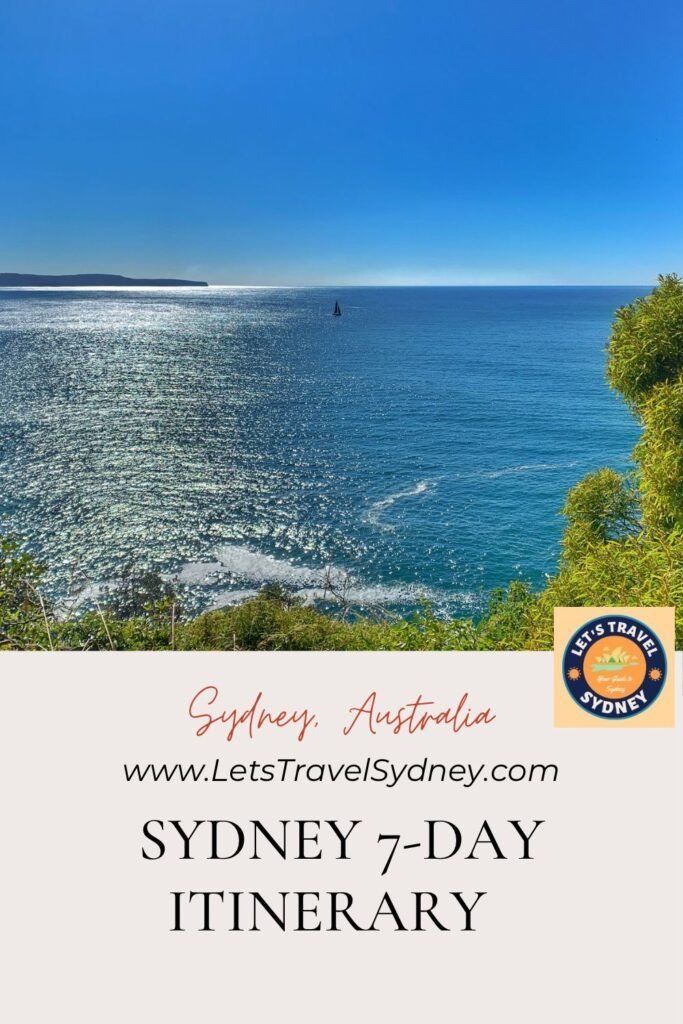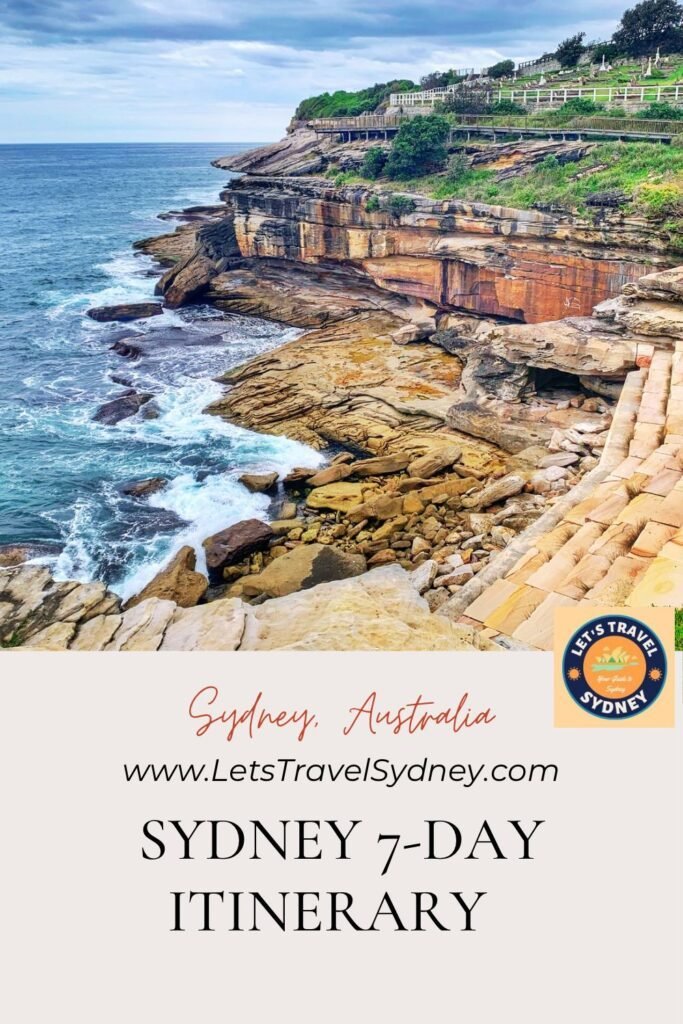Discover Sydney: 7 Days of Unforgettable Experiences (2025)
Are you looking for a Sydney 7 Day itinerary? How exciting is it that you are travelling to one of the world’s most beautiful cities? This post presents an ideal Sydney 7 day itinerary packed with must-see attractions, hidden gems, and practical tips from a local’s perspective.
I have spent ten years living in Sydney, exploring its vibrant neighbourhoods, stunning beaches, and iconic landmarks. During this time, I have discovered the best ways to experience the city’s unique charm and culture. Whether you’re a first-time visitor or returning to uncover more of Sydney‘s magic, this guide will help you make the most of your stay in one of the world’s most beautiful cities.
This article may contain affiliate links, meaning if you decide to purchase via my links, I may earn a commission at no additional cost to you. For complete information, please see our affiliate disclaimer here.
Sydney 7-Day Itinerary in Summary
| Day | Things To Do | |
|---|---|---|
| Day 1 | Sydney Central Business District (CBD) | 1. Sydney Opera House 2. Royal Botanic Garden 3. Museum of Contemporary Art (MCA) 4. Nurses Walk 5. The Rocks |
| Day 2 | Darling Harbour | 1. SEA LIFE Sydney Aquarium 2. Madame Tussauds Sydney 3. Australian National Maritime Museum 4. Chinese Garden of Friendship 5. Powerhouse Museum |
| Day 3 | Blue Mountains and Jenolan Caves | 1. Blue Mountains 2. Jenolan Caves |
| Day 4 | Manly and Shelly Beach | 1. Manly Beach 2. Shelly Beach 3. Many to Spit Bridge Walk |
| Day 5 | Bondi Beach and Coogee | 1. Coogee to Bondi Walk 2. Bondi Beach 3. Street Art in Bondi |
| Day 6 | Surry Hills Exploration | 1. China Town 2. Surry Hills Pub Hopping |
| Day 7 | Markets and Shopping | 1. Paddy’s Market 2. Queen Victoria Building (QVB) 3. Bondi Beach Market |
Sydney 7-Day Detailed Itinerary
Day 1: Sydney Central Business District (CBD) Gems
Sydney Opera House
- Time Required: 2-3 hours (including the tour if booked).
- How to Get There: Walk or take a train to Circular Quay.
- Ticket Information: Book tickets in advance for tours and shows. Prices vary depending on the event. You can also take architectural and backstage tours.
The Sydney Opera House is one of the most iconic buildings in the world. It is renowned for its unique sail-like design and prominent location on Sydney’s Bennelong Point. Its history is as fascinating as its architecture.
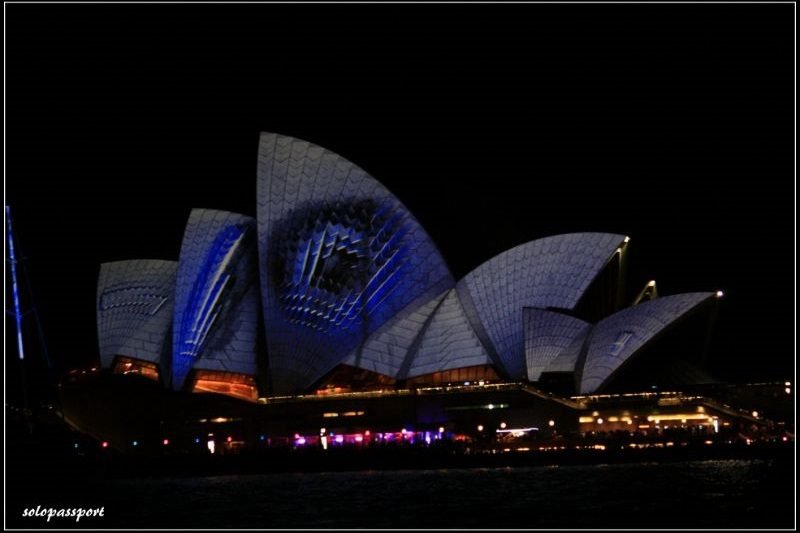
Design and Construction:
- Architect: The Sydney Opera House was designed by Danish architect Jorn Utzon, who won an international design competition in 1957. Utzon’s vision was groundbreaking, combining modernist forms with an organic aesthetic inspired by natural elements.
- Construction: Construction began in 1959 and was expected to take four years, but it took 14 years and was completed in 1973. The project faced numerous challenges, including technical difficulties with the complex roof structure and escalating costs.
- Opening: Queen Elizabeth II officially opened The Opera House on October 20, 1973. The first public performance was the Australian Opera’s production of Sergei Prokofiev’s “War and Peace.”
Architectural Significance:
- Design: The Opera House is renowned for its unique shell-like structures that form the roof. These white, sail-shaped shells are constructed from precast concrete panels and covered with over one million glossy white and matte cream tiles.
- Innovation: Utzon’s design was revolutionary, combining elements of modernist architecture with innovative engineering solutions. The roof structures, known as “shells,” were particularly challenging to construct and required pioneering computer modelling techniques.
Also, Read: Sydney vs. Melbourne: Which one is better?
Cultural Impact:
- Performing Arts Venue: The Sydney Opera House is a multi-venue performing arts centre that hosts over 1,500 performances annually, including opera, ballet, theatre, and concerts.
- UNESCO World Heritage Site: In 2007, the Sydney Opera House was designated a UNESCO World Heritage Site, recognised for its architectural significance and as a masterpiece of human creative genius.
Tips for Visiting the Sydney Opera House:
- Guided Tours:
- Recommendation: Take guided tours to learn about the opera house’s history, architecture, and behind-the-scenes aspects. Tours are available in multiple languages, including standard, backstage ($190 per adult), and architectural ($40 per adult) tours.
- Booking: To ensure availability, book tickets online in advance, especially during peak tourist seasons.
- Attend a Performance:
- Variety of Shows: Check the event schedule and try to attend a performance. The Opera House hosts various events, from operas and symphonies to contemporary music and theatre.
- Tickets: Purchase tickets in advance, as popular shows can sell out quickly.
- Dining Options:
- Opera Bar: Enjoy a meal or drink at the Opera Bar, which offers stunning views of the Sydney Harbour Bridge and the skyline. It’s a great place to relax before or after a tour or performance.
- Bennelong Restaurant: For a fine dining experience, visit Bennelong Restaurant, located within the Opera House. Reservations are recommended.
- Photography:
- Best Spots: Capture iconic photos from various angles. Some of the best photography spots include the western side of Circular Quay, Mrs Macquarie’s Chair, and a ferry on the harbour.
- Lighting: Early morning or late afternoon provides the best natural light for photography.
- Accessibility:
- Facilities: The Opera House has accessibility features, including ramps, elevators, and designated seating areas for people with disabilities.
- Tours: Accessible tours are available for visitors with mobility challenges.
- Getting There:
- Public Transport: The Opera House is easily accessible by public transport. Take a train to Circular Quay Station, then a short walk to the venue. Buses and ferries also service Circular Quay.
- Parking: Limited parking is available at the Opera House Car Park, but public transport is often easier due to its central location.
- Dress Code:
- Performances: There is no strict performance dress code, but smart casual attire is recommended. For opening nights or gala events, more formal attire may be appropriate.
- Tours: Casual and comfortable clothing suits tours, especially if you plan to walk around the nearby attractions.
Royal Botanic Garden
- Time Required: 1-2 hours
- How to Get There: A short walk from the Opera House.
- Ticket Information: Free entry. You can also take a paid Aboriginal guided tour.
The Royal Botanic Garden Sydney is a historic and serene oasis in Sydney’s heart. It offers stunning views of Sydney Harbour and a rich collection of plant species. It serves as a significant cultural and scientific institution.
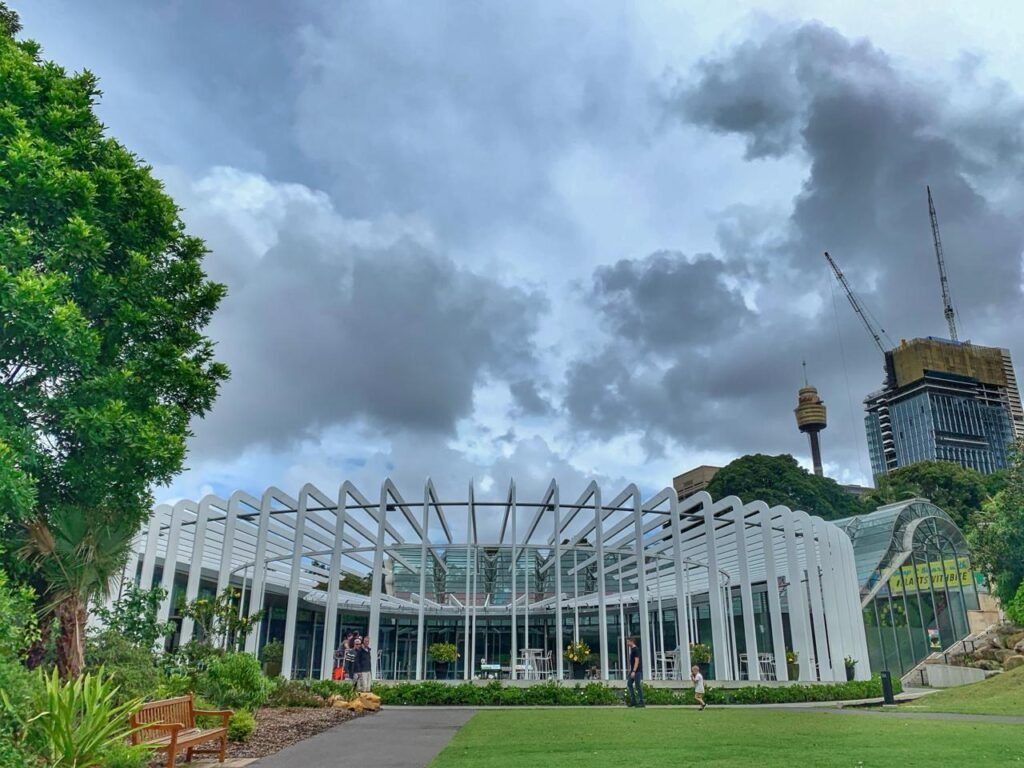
Foundation and Development:
- Establishment: The Royal Botanic Garden was established in 1816, making it the oldest scientific institution in Australia. It was initially developed on the first farm established by European settlers.
- Initial Purpose: The garden initially intended to introduce European plants and crops to the Australian environment and acclimate them to it. Over time, it evolved into a botanical garden with a diverse collection of plants worldwide.
- Growth and Expansion: Under the guidance of various directors, the garden expanded its collection and played a crucial role in studying Australian flora. Directors like Charles Moore and Joseph Maiden made significant contributions, introducing many new plant species and improving the garden’s infrastructure.
Botanical and Cultural Significance:
- Plant Collections: The garden is home to an extensive collection of plants, including rare and endangered species. It features themed gardens such as the Australian Native Rockery, the Palm Grove, and the Herb Garden.
- Scientific Research: The Royal Botanic Garden is a botanical research and education centre. It collaborates with other botanical institutions worldwide and researches plant conservation, taxonomy, and horticulture.
- Cultural Events: The garden hosts numerous cultural events, including outdoor concerts, art exhibitions, and festivals. It is also a popular venue for weddings and private functions.
Tips for Visiting the Royal Botanic Garden Sydney:
- Guided Tours:
- Recommendation: Take advantage of the garden’s guided tours (by donation), which provide insights into its history, plants, and wildlife.
- Booking: Check the garden’s website for tour schedules and registration details.
- Main Attractions:
- Calyx: Visit the Calyx, a world-class horticultural space with ever-changing exhibitions. It often showcases large-scale plant displays and interactive installations.
- Mrs Macquarie’s Chair: This historic sandstone chair offers one of the best vantage points in Sydney for panoramic views of the Sydney Opera House and Harbour Bridge.
- Palm Grove: Wander through Palm Grove, where you can see diverse palm species worldwide.
- Photography:
- Best Spots: The garden offers numerous picturesque spots, including the rose garden, the waterfront walk, and the succulent garden.
- Lighting: Early morning or late afternoon provides the best natural light for photography. The light during these times enhances the beauty of the garden’s landscapes.
- Accessibility:
- Facilities: The garden is accessible to visitors with disabilities. It has paved pathways, ramps, and accessible restrooms.
- Tours: Accessible tours are available upon request. Check with the visitor centre for more information.
- Getting There:
- Public Transport: The garden is easily accessible by public transport. Take a train to Martin Place Station or Circular Quay Station, then take a short walk to the garden.
- Parking: Limited parking is available near the garden, but due to its central location, it is advisable to use public transport.
- Dining Options:
- Café and Restaurant: Enjoy a meal or coffee at the Botanic Garden Café, which offers indoor and outdoor seating with garden views. Alternatively, visit the Restaurant Botanic for a more upscale dining experience.
- Picnic Spots: The garden has many beautiful spots perfect for a picnic. Bring your food and enjoy a meal surrounded by nature.
- Events and Activities:
- Seasonal Events: The garden hosts various seasonal events, such as the annual Twilight at Taronga concert series and the Tropfest short film festival.
- Workshops and Programs: Participate in workshops and educational programs throughout the year. Topics include gardening, plant identification, and sustainability.
- Visitor Information:
- Visitor Center: The visitor centre offers maps, brochures, and information about current events and exhibitions.
- Opening Hours: The garden is open daily from early morning until sunset.
- Wildlife:
- Birdwatching: The garden is home to various bird species, including cockatoos, rainbow lorikeets, and ibises. Bring binoculars for birdwatching.
- Resident Animals: Look out for resident animals such as water dragons and fruit bats, often seen basking in the sun or roosting in trees.
Museum of Contemporary Art (MCA)
- Time Required: 1-2 hours
- How to Get There: Walk from Circular Quay.
- Ticket Information: Free entry to permanent collections. Some exhibitions may have an entry fee.
The Museum of Contemporary Art (MCA) in Sydney is a significant cultural institution in the heart of Sydney’s Circular Quay. It is dedicated to exhibiting, interpreting, and collecting contemporary art across Australia and worldwide.
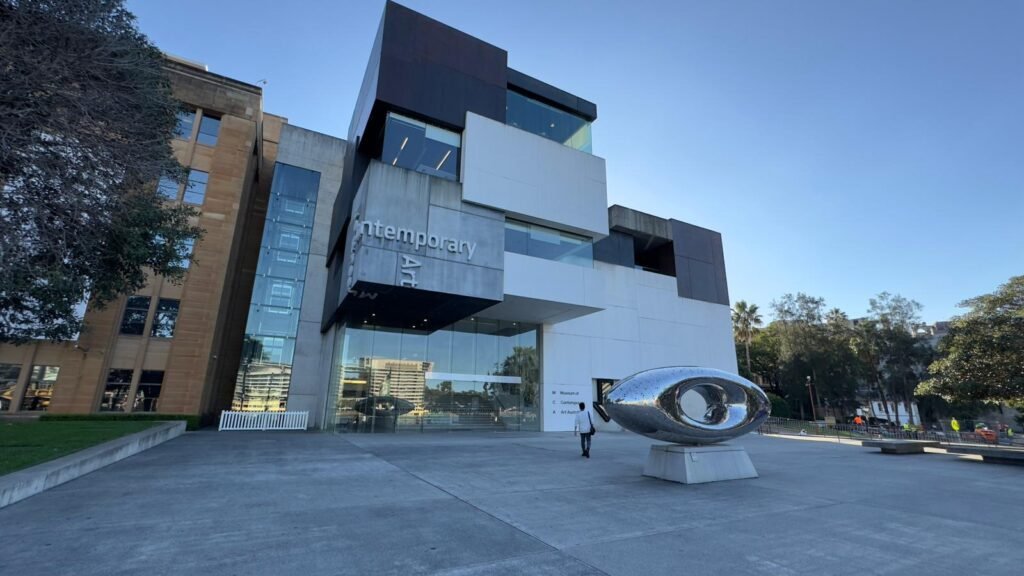
Foundation and Development:
- Establishment: The MCA was established in 1991 and is housed in a heritage-listed building that was originally the Maritime Services Board building. The building itself is an example of late Art Deco architecture.
- Initial Funding: The museum was made possible by an endowment from Australian expatriate artist John Power, who left funds to the University of Sydney to foster an appreciation of contemporary visual art.
- Expansion: In 2012, the MCA underwent a significant expansion with the addition of the Mordant Wing, which provided additional gallery spaces, educational facilities, and a rooftop café with stunning views of the Sydney Opera House and Harbour Bridge.
Exhibitions and Collections:
- Permanent Collection: The MCA’s collection focuses on contemporary art from the 1980s to the present, including works by Aboriginal and Torres Strait Islander artists. The collection features diverse media, including painting, sculpture, photography, and digital art.
- Temporary Exhibitions: The MCA hosts a dynamic program of temporary exhibitions featuring both Australian and international artists. These exhibitions often include innovative and experimental works that challenge traditional boundaries of art.
- Site-Specific Works: The museum frequently commissions site-specific works, allowing artists to engage with the unique architecture and spaces of the MCA.
Tips for Visiting the Museum of Contemporary Art (MCA):
- Plan Your Visit:
- Opening Hours: The MCA is open Tuesday to Sunday from 10:00 AM to 5:00 PM and is closed on Christmas Day.
- Admission: Entry to the permanent collection is free. Some special exhibitions may have an entry fee.
- Guided Tours:
- Recommendation: Join a guided tour to gain deeper insights into the artworks and exhibitions. The MCA offers free daily tours led by knowledgeable guides.
- Booking: No booking is required for the daily tours. Check the schedule on the MCA website or at the information desk.
- Exhibitions:
- Current Exhibitions: The exhibitions change regularly, so there’s always something new.
- Artist Talks and Workshops: The MCA frequently hosts artist talks, workshops, and special events. These can provide a deeper understanding of contemporary art and the creative process.
- Facilities:
- Cloakroom: A free cloakroom service stores bags and coats, allowing visitors to explore the museum comfortably.
- Accessibility: The MCA is fully accessible, with ramps, elevators, and accessible restrooms. Wheelchairs are available on request.
- Dining and Shopping:
- MCA Café: Enjoy a meal or coffee at the MCA Café on the rooftop terrace. The café offers stunning views of the Sydney Harbour Bridge and Opera House, making it a perfect relaxing spot.
- MCA Store: Visit the MCA Store for a unique selection of art books, prints, and design objects. It’s a great place to find gifts and souvenirs inspired by contemporary art.
- Photography:
- Policy: Photography is allowed in most museum areas, but flash photography and tripods are prohibited. Always check for signage indicating any restrictions.
- Best Spots: Photograph the exterior of the MCA, the rooftop views, and any large-scale installations or artworks.
- Getting There:
- Public Transport: The MCA is conveniently located at Circular Quay. Take a train, bus, or ferry to Circular Quay Station, and then it’s a short walk to the museum.
- Parking: Limited parking is available nearby, but public transport is recommended due to the central location.
- Membership:
- Benefits: Consider becoming a member of the MCA for benefits such as exclusive previews, discounts on ticketed exhibitions, and special members-only events.
- Sign-Up: Membership details are available on the MCA website or at the information desk.
- Interactive Experiences:
- Digital and Interactive Art: Look for digital and interactive installations inviting visitor participation. These experiences can provide a unique and engaging way to connect with contemporary art.
Nurses Walk
- Time Required: 30 minutes
- How to Get There: Located in The Rocks, accessible by walking from the MCA.
Nurses Walk is a historic pathway in the Rocks area of Sydney. It offers a glimpse into the city’s early colonial past. This narrow lane is rich in history and provides a unique perspective on Sydney’s development.
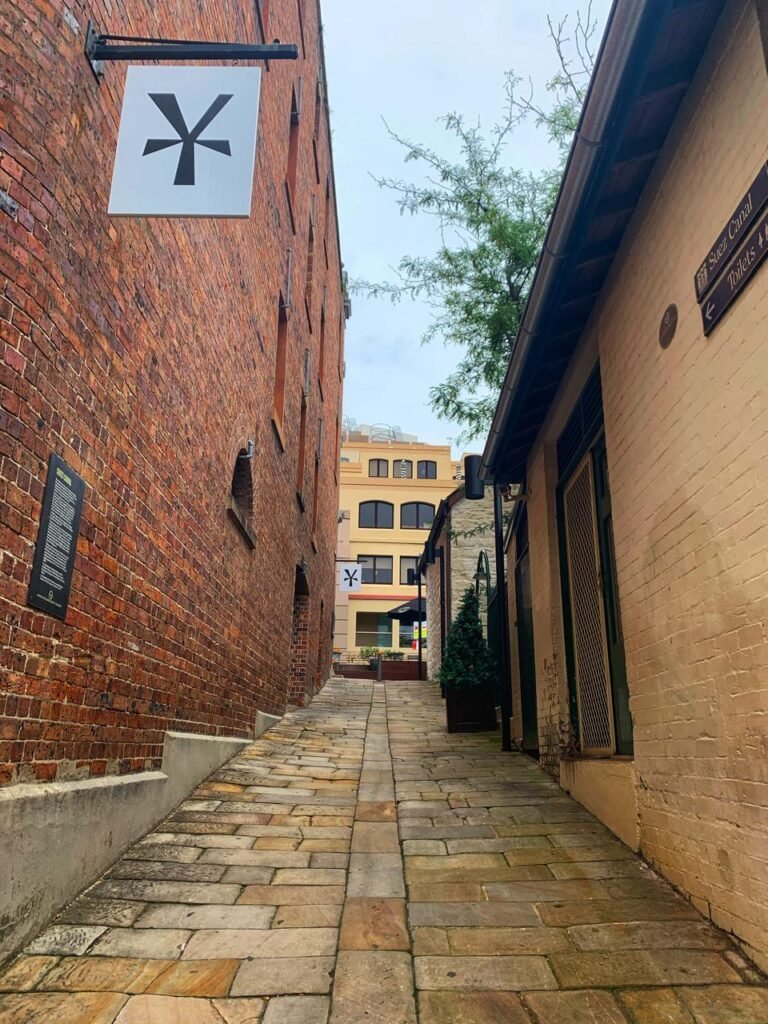
Colonial Beginnings:
- Origins: Nurses Walk was named in honour of the nurses who cared for convicts and early settlers in the colony’s first hospital, located nearby. The walk was originally a series of laneways and passages nurses and other residents used.
- Early Healthcare: The first hospital, known as the “Rum Hospital,” was constructed between 1811 and 1816 using funds from the sale of rum. It was crucial in providing medical care during the colony’s early years.
- Heritage Preservation: The Nurses Walk has been preserved to maintain its historic character over the years. The laneways have been restored, and many buildings now house cafes, shops, and galleries, making it a vibrant part of The Rocks.
Significance and Features:
- Historic Sites: Along the Nurses Walk, you will find several plaques and markers that provide information about the area’s history. These markers highlight significant events and people contributing to Sydney’s early development.
- Architecture: The buildings along Nurses Walk showcase a mix of colonial and early 20th-century architecture. Many of these structures have been carefully restored, offering a glimpse into the architectural styles of the past.
- Cultural Impact: Nurses Walk reminds us of the challenges faced by early settlers and the essential role of healthcare in the colony’s survival. It is a tribute to the dedication and hard work of that era’s nurses and medical staff.
Tips for Visiting Nurses Walk:
- Exploring the Area:
- Self-Guided Walk: Take a self-guided walk along Nurses Walk to appreciate its historical significance. Informational plaques along the way provide context and exciting facts about the area.
- Guided Tours: Consider joining a guided tour of The Rocks. Many tours include the Nurses Walk, providing detailed insights into the area’s history and stories.
- Main Attractions:
- Heritage Plaques: Look for the heritage plaques that provide historical information about the buildings and sites along Nurses Walk. These plaques offer fascinating details about the area’s past.
- The Rocks Discovery Museum: Visit The Rocks Discovery Museum, located nearby, to learn more about the history of The Rocks and the early colonial period. The museum has interactive exhibits and displays artifacts from the area.
- Dining and Shopping:
- Cafes and Restaurants: Nurses Walk is home to several charming cafes and restaurants. Enjoy a meal or a coffee while soaking in the historic atmosphere. Many establishments offer outdoor seating, allowing you to enjoy the unique setting.
- Boutique Shops: Explore the boutique shops along Nurses Walk. These shops offer a range of unique items, including local crafts, souvenirs, and art. They are great for finding special gifts and souvenirs.
- Photography:
- Historic Charm: Nurses Walk offers numerous photo opportunities with its narrow laneways, historic buildings, and charming details. With your camera, capture the essence of Sydney’s colonial past.
- Lighting: Early morning or late afternoon provides the best natural light for photography, highlighting the textures and features of the historic architecture.
- Events and Activities:
- Markets: Check out the weekend markets in The Rocks, located nearby. These markets feature local artisans, food stalls, and entertainment, adding to the area’s vibrant atmosphere.
- Festivals: The Rocks hosts various festivals and events throughout the year. Check the local event calendar for any special activities happening during your visit.
- Getting There:
- Public Transport: Nurses Walk is easily accessible by public transport. Take a train, bus, or ferry to Circular Quay Station; then it’s a short walk to The Rocks. Follow the signs to Nurses Walk.
- Walking: The Rocks are pedestrian-friendly, and the Nurses Walk is best explored on foot. Wear comfortable shoes to navigate the cobblestone streets and laneways.
- Accessibility:
- Pathways: While Nurses Walk maintains its historic character with cobblestone streets and narrow pathways, efforts have been made to improve accessibility. Be mindful of uneven surfaces and narrow passages.
- Facilities: Accessible restrooms are available in The Rocks area. Check with the visitor centre for detailed accessibility information and assistance.
The Rocks
- Time Required: 1-2 hours
- How to Get There: Walk from Circular Quay or take a bus to The Rocks.
- Ticket Information: Free to explore. Some sites and museums have entry fees.
The Rocks is one of Sydney’s most historically significant and vibrant areas, offering a fascinating glimpse into the city’s colonial past. Located on the western side of Circular Quay, The Rocks is renowned for its well-preserved heritage buildings, narrow laneways, and rich history.
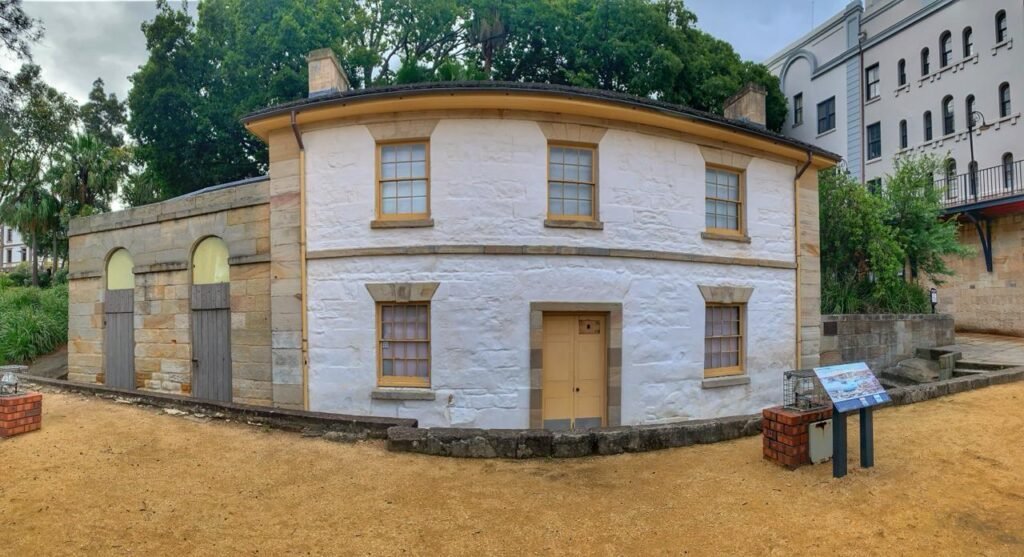
Colonial Beginnings:
- First Settlement: The Rocks was the site of the first European settlement in Australia, established in 1788. It was home to convicts, soldiers, and free settlers, many of whom lived in crude huts made of local sandstone, giving the area its name.
- Convict History: The Rocks quickly became a bustling port community. It was known for its rough reputation, with numerous pubs, brothels, and a large convict population. Many of the early buildings were constructed by convict labour.
- 19th Century: Throughout the 19th century, The Rocks developed into a lively waterfront precinct. Despite its growth, it retained its rough-and-tumble character, combining residential, commercial, and industrial uses.
Preservation and Modern Era:
- Heritage Conservation: In the early 20th century, The Rocks faced demolition to make way for modern development. However, public outcry and efforts by heritage activists led to the preservation of many historic buildings.
- Renewal Projects: Significant conservation and redevelopment efforts in the 1970s and 1980s transformed The Rocks into a major tourist attraction while maintaining its historic charm.
- Cultural Hub: Today, The Rocks is a vibrant cultural hub featuring museums, galleries, markets, restaurants, and pubs. It is a popular destination for locals and tourists, offering a blend of history, culture, and entertainment.
Tips for Visiting The Rocks:
- Exploring the Area:
- Self-Guided Walk: Stroll through The Rocks to explore its historic laneways, cobblestone streets, and heritage buildings. Look for information plaques that provide insights into the area’s history.
- Guided Tours: Join a guided tour to learn about The Rocks’ rich history. Tours are available on various themes, including convict history, ghost tours, and historical walking tours.
- Main Attractions:
- The Rocks Discovery Museum: Visit this free museum to learn about the history of The Rocks from pre-European days to the present. The museum features interactive exhibits and artifacts.
- Cadmans Cottage: Built in 1816, this is one of Sydney’s oldest surviving buildings. It now serves as an information centre and offers insights into early colonial life.
- Susannah Place Museum: This living history museum consists of four terrace houses built in 1844. It provides a glimpse into the lives of working-class families over nearly 150 years.
- Markets:
- The Rocks Markets: Held every weekend, The Rocks Markets feature a variety of stalls selling handmade crafts, jewellery, clothing, art, and gourmet food. It’s a great place to find unique souvenirs and enjoy street food.
- Friday Foodie Market: On Fridays, the market focuses on food, offering various delicious street food options worldwide.
- Dining and Pubs:
- Historic Pubs: The Rocks is home to some of Sydney’s oldest pubs, including The Lord Nelson Brewery Hotel and The Fortune of War. Enjoy a drink and soak in the historic atmosphere.
- Restaurants: Numerous restaurants offer various cuisines, from fine dining to casual eateries. Many have outdoor seating with views of the Sydney Harbour Bridge and Opera House.
- Events and Festivals:
- Vivid Sydney: During the Vivid Sydney festival, The Rocks is illuminated with stunning light installations and projections. It’s a highlight of Sydney’s cultural calendar.
- The Rocks Aroma Festival: This annual event celebrates coffee and chocolate, featuring stalls, tastings, and live entertainment.
- Shopping:
- Boutique Shops: Explore the boutique shops in The Rocks, which offer a range of unique items, including local crafts, art, fashion, and gifts.
- The Rocks Centre: This shopping precinct offers a variety of stores and specialty shops in a historic setting.
- Photography:
- Iconic Views: The Rocks offers numerous photo opportunities, including views of the Sydney Harbour Bridge, Opera House, and historic buildings. Early morning or late afternoon provides the best light for photography.
- Historic Details: Photograph The Rocks’s cobblestone streets, sandstone buildings, and historic markers to capture its charm.
- Getting There:
- Public Transport: The Rocks is easily accessible by public transport. Take a train, bus, or ferry to Circular Quay; then it’s a short walk to The Rocks.
- Walking: The area is best explored on foot, allowing you to wander through its narrow lanes and discover hidden gems.
- Accessibility:
- Pathways: While The Rocks maintains its historic character with cobblestone streets and narrow pathways, efforts have been made to improve accessibility. Be mindful of uneven surfaces.
- Facilities: Accessible restrooms and facilities are available in The Rocks area. Check with the visitor centre for detailed accessibility information and assistance.
Day 2: Darling Harbour Attractions
SEA LIFE Sydney Aquarium
- Time Required: 1.5-2 hours
- How to Get There: Take a light rail or bus to Darling Harbour.
- Ticket Information: Book online for discounted prices.
SEA LIFE Sydney Aquarium is one of Sydney’s premier attractions, offering you a fascinating journey through the underwater world. Located in Darling Harbour, the aquarium features many marine life, including sharks, rays, tropical fish, and unique Australian aquatic creatures. With interactive exhibits and immersive experiences, SEA LIFE Sydney Aquarium provides an educational and entertaining experience for visitors of all ages.
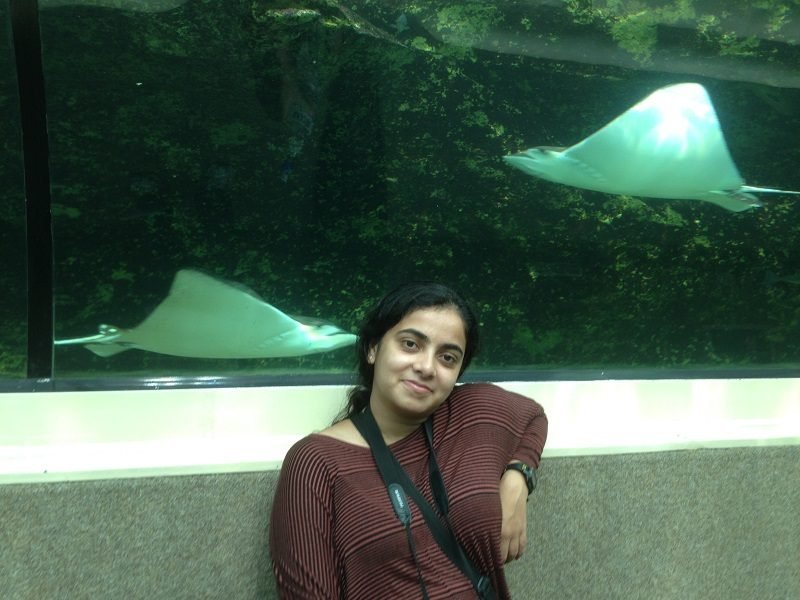
Key Features and Attractions:
- Diverse Marine Life: The aquarium is home to over 13,000 marine animals from 700 species, showcasing the diversity of aquatic life from Australia’s waters and beyond. You can see everything from tiny seahorses to massive sharks.
- Themed Zones: SEA LIFE Sydney Aquarium is divided into themed zones, each focusing on different marine habitats. Key zones include:
- Jurassic Seas: Explore ancient marine creatures and learn about the evolution of sea life.
- Shark Valley: Walk through a glass tunnel surrounded by sharks, rays, and other large ocean predators.
- Dugong Island: Meet Pig, the resident dugong, and learn about the conservation efforts for these gentle sea mammals.
- Great Barrier Reef: Experience Australia’s iconic reef ecosystem’s vibrant colours and diverse species.
- Interactive Experiences: The aquarium offers various interactive experiences, such as touch pools, where you can get hands-on experience with marine life. There are also opportunities for behind-the-scenes tours and animal encounters.
- Conservation Focus: SEA LIFE Sydney Aquarium is dedicated to marine conservation and education. Exhibits highlight the importance of protecting marine environments and the efforts to conserve endangered species.
Tips for Visiting SEA LIFE Sydney Aquarium:
- Getting There:
- Public Transport: The aquarium is easily accessible by public transport. Take a train to Town Hall Station and walk to Darling Harbour, or use the light rail and exit at the Pyrmont Bay stop.
- Parking: Paid parking is available at nearby parking stations in Darling Harbour. Consider using public transport to avoid parking hassles.
- Best Times to Visit:
- Weekdays: Visit on weekdays for a quieter experience, especially in the morning or early afternoon.
- Avoid Peak Hours: The aquarium can get crowded on weekends, school holidays, and public holidays. Plan your visit during off-peak hours for a more relaxed experience.
- Ticket Information:
- Online Booking: Purchase tickets in advance to save time and potentially get a discount. Check the aquarium’s website for special offers and packages.
- Combo Tickets: For added value, consider combo tickets that include entry to other nearby attractions, such as WILD LIFE Sydney Zoo or Madame Tussauds.
- Duration of Visit:
- Time Required: Allocate 1.5 to 2 hours to explore the aquarium fully. Allow additional time if you plan to participate in interactive experiences or attend scheduled talks.
- Interactive and Educational Activities:
- Touch Pools: Spend time at the touch pools to learn about and interact with marine creatures.
- Educational Talks: Check the schedule for daily talks and feeding sessions, where you can learn more about the animals and their habitats from expert aquarists.
- Photography Tips:
- Lighting: The aquarium has dim lighting to simulate underwater conditions, so use a camera with good low-light capabilities or adjust your smartphone settings accordingly.
- No Flash: Flash photography is not allowed as it can disturb the animals. Ensure your camera settings are appropriate for low-light environments.
- Dining and Facilities:
- Cafes and Shops: The aquarium has a café where you can take a break and enjoy refreshments. Souvenir shops offer marine-themed gifts and memorabilia.
- Amenities: Restrooms and baby change facilities are available on-site. The aquarium is wheelchair accessible, with ramps and elevators for easy navigation.
- Conservation Support:
- Support Efforts: Learn about and support the aquarium’s conservation programs. Consider making a donation or participating in activities that contribute to marine conservation.
Madame Tussauds Sydney
- Time Required: 1-1.5 hours
- How to Get There: Located near SEA LIFE; walk from one to the other.
- Ticket Information: Combined tickets with SEA LIFE may be available.
Madame Tussauds Sydney is a popular attraction located in Darling Harbour. It offers you a chance to get up close and personal with lifelike wax figures of celebrities, historical icons, sports stars, and cultural legends. The museum is part of the renowned Madame Tussauds chain, known for its meticulous attention to detail and realistic representations of famous personalities. It’s an engaging and interactive experience for visitors of all ages.

Key Features and Attractions:
- Lifelike Wax Figures: The museum features over 100 wax figures of famous personalities worldwide. Each figure is crafted with incredible detail to ensure a realistic appearance.
- Interactive Experiences: Madame Tussauds Sydney offers various interactive zones where visitors can pose with the figures, try on costumes, and immerse themselves in themed sets. Highlights include:
- Film & TV: Pose with stars from Hollywood and Australian film and television.
- Music: Stand next to global music icons and Australian legends.
- History & World Leaders: Meet influential historical figures and contemporary leaders.
- Sports: Get sporty with lifelike representations of famous athletes.
- Culture & Fashion: See icons from the worlds of fashion and culture up close.
- Photo Opportunities: The museum is designed for photo opportunities, with each wax figure set in a themed environment. You are encouraged to take pictures and interact with the exhibits.
- Special Exhibits: Madame Tussauds often features special exhibits and seasonal displays, regularly adding new figures and themes to keep the experience fresh and exciting.
Tips for Visiting Madame Tussauds Sydney:
- Getting There:
- Public Transport: The museum is easily accessible via public transport. Take a train to Town Hall Station and walk to Darling Harbour, or use the light rail and exit at the Convention Centre or Pyrmont Bay stop.
- Parking: Paid parking is available at nearby parking stations in Darling Harbour. Consider using public transport to avoid parking difficulties.
- Best Times to Visit:
- Weekdays: Visit on weekdays for a less crowded experience, particularly in the morning or early afternoon.
- Avoid Peak Hours: The museum can get busy on weekends, school holidays, and public holidays. Plan your visit during off-peak hours for a more relaxed experience.
- Ticket Information:
- Online Booking: Purchase tickets in advance to save time and potentially get a discount.
- Combo Tickets: For added value, consider combo tickets that include entry to other nearby attractions, such as SEA LIFE Sydney Aquarium or WILD LIFE Sydney Zoo.
- Duration of Visit:
- Time Required: Allocate 1 to 2 hours to explore the museum fully. Allow additional time if you plan to take many photos and participate in interactive experiences.
- Interactive and Educational Activities:
- Pose and Play: Use the interactive elements by posing with the wax figures and trying on costumes. The museum encourages fun and engagement.
- Learn the Craft: Look for exhibits that explain the process of creating wax figures, offering insights into the artistry and craftsmanship involved.
- Photography Tips:
- Camera Ready: Bring a camera or smartphone to capture your interactions with the wax figures. Ensure your device is charged and has enough storage for photos.
- No Flash: Flash photography is generally allowed, but be mindful of other visitors. Use the natural lighting provided in the exhibits for the best results.
- Dining and Facilities:
- Cafes and Shops: The museum has a café where you can take a break and enjoy refreshments. There is also a souvenir shop offering themed gifts and memorabilia.
- Amenities: Restrooms and baby change facilities are available on-site. The museum is wheelchair accessible, with ramps and elevators for easy navigation.
- Engage with Exhibits:
- Interact Freely: Madame Tussauds is designed for interaction. Don’t hesitate to engage with the exhibits, try on props, and make the most of the themed settings.
- Group Visits: If visiting with family or friends, take group photos and have fun posing with the wax figures.
Australian National Maritime Museum
- Time Required: 1.5-2 hours
- How to Get There: Walk from SEA LIFE.
- Ticket Information: Some exhibits are free; others require tickets.
The Australian National Maritime Museum in Sydney’s Darling Harbour offers a captivating journey through Australia’s maritime history. Opened in 1991, the museum explores the country’s rich naval heritage, maritime exploration, and the influence of the sea on Australian life.
With a vast collection of historic vessels, interactive exhibits, and educational programs, the museum provides a comprehensive and engaging experience for visitors of all ages. Be sure to see the submarine when you visit the Australian National Maritime Museum.
Key Features and Attractions:
- Historic Vessels: The museum features a remarkable fleet of historic ships, including:
- HMAS Vampire: A retired destroyer from the Royal Australian Navy.
- HMB Endeavour Replica: A full-scale replica of Captain James Cook’s famous ship.
- HMAS Onslow: An Oberon-class submarine open for exploration.
- James Craig: A fully restored 19th-century tall ship.
- Permanent Exhibitions: The museum’s permanent exhibitions cover various aspects of maritime history, including:
- Navigators: The history of maritime exploration and the role of navigators in discovering new lands.
- Passengers: Stories of immigrants and their journeys to Australia by sea.
- Watermarks: The significance of water in Australian culture and history.
- Interactive and Thematic Exhibits: The museum offers interactive exhibits that engage visitors in hands-on learning experiences. Popular themes include:
- Action Stations: An immersive experience showcasing life aboard a naval vessel.
- Kids on Deck: A creative play space where children can engage in maritime-themed activities.
- Special Exhibitions and Events: The museum regularly hosts special exhibitions, events, and educational programs. Check the museum’s schedule for current and upcoming events.
Tips for Visiting the Australian National Maritime Museum:
- Getting There:
- Public Transport: The museum is easily accessible via public transport. Take a train to Town Hall Station and walk to Darling Harbour, or use the light rail and exit at the Pyrmont Bay stop.
- Parking: Paid parking is available at nearby parking stations in Darling Harbour. Consider using public transport to avoid parking difficulties.
- Best Times to Visit:
- Weekdays: Visit on weekdays for a quieter experience, particularly in the morning or early afternoon.
- Avoid Peak Hours: The museum can get busy on weekends, school holidays, and public holidays. Plan your visit during off-peak hours for a more relaxed experience.
- Ticket Information:
- Online Booking: Purchase tickets in advance to save time and potentially get a discount.
- Membership: Consider a museum membership if you plan to visit multiple times or want to support the institution. Membership often includes benefits like free entry and discounts on events.
- Duration of Visit:
- Time Required: Allocate 2 to 3 hours to explore the museum fully. Allow additional time if you plan to visit the historic vessels and participate in interactive exhibits.
- Interactive and Educational Activities:
- Historic Ship Tours: Don’t miss the opportunity to tour the museum’s historic vessels. Guided tours are available to help you better understand each ship’s history and significance.
- Family-Friendly Activities: The museum offers various activities for families and children, including hands-on exhibits and educational programs.
- Photography Tips:
- Camera Ready: Bring a camera or smartphone to capture your visit, especially on the historic ships and during interactive exhibits.
- Lighting: Be mindful of indoor lighting conditions. Adjust your camera settings as needed for the best results.
- Dining and Facilities:
- Cafes and Shops: The museum has a café where you can enjoy refreshments with a view of Darling Harbour. The gift shop offers maritime-themed gifts and souvenirs.
- Amenities: Restrooms, baby change facilities, and accessible services are available on-site. The museum is wheelchair accessible, with ramps and elevators for easy navigation.
- Special Exhibits and Programs:
- Check Schedules: Before your visit, look up event schedules and exhibition information to see if there are any special activities or temporary exhibits during your stay.
- Educational Programs: The museum offers educational programs and workshops for various age groups. Participate in these programs to enhance your learning experience.
Chinese Garden of Friendship
- Time Required: 1 hour
- How to Get There: Walk from Darling Harbour or take a light rail.
- Ticket Information: Purchase tickets at the entrance.
The Chinese Garden of Friendship is serene and beautifully landscaped in Darling Harbour, Sydney. It is a tribute to the friendship between Sydney and its Chinese sister city, Guangzhou. This tranquil oasis offers a glimpse into traditional Chinese garden design and cultural elements.
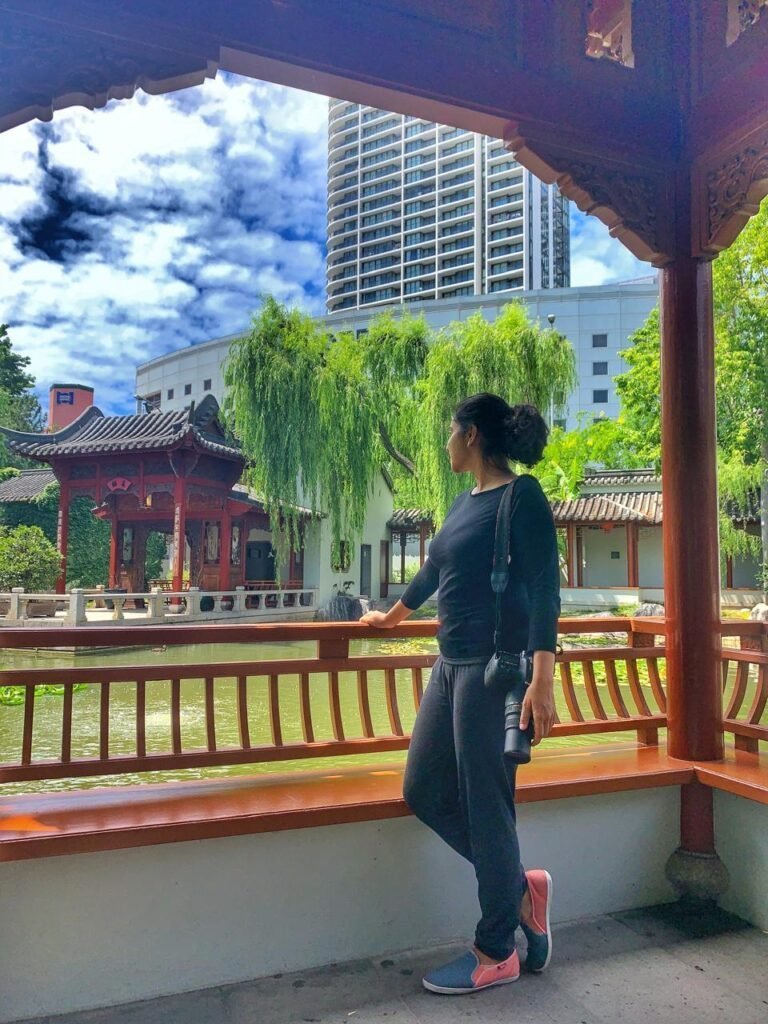
Foundation and Development:
- Inception: The garden was officially opened in 1988 to celebrate the bicentennial of the first European settlement in Australia. It was designed by landscape architects from Sydney and Guangzhou, reflecting traditional Chinese garden aesthetics.
- Design: The garden follows classical Chinese principles of landscape design, incorporating elements such as rocks, water, and plants to create a harmonious environment. It serves as a living example of Chinese horticultural and architectural traditions.
- Cultural Significance: The garden symbolises Australia and China’s strong cultural and historical connections. It also represents the values of peace and friendship.
Key Features and Attractions:
- Traditional Design: The garden is designed in a classical Chinese landscape garden style. It features winding paths, traditional pavilions, rock formations, and water features that create a sense of tranquillity and natural beauty.
- Water Features: The garden’s focal point is a central pond with koi fish surrounded by lush plants. The pond offers a peaceful setting for relaxation and contemplation.
- Pavilions: The garden includes several traditional Chinese pavilions, such as the Ming Dynasty-style Pavilion of Pavilion, which provides sheltered spots to enjoy the garden’s beauty.
- Rock Formations: The garden’s rock formations, including the distinctive “Dragon Rock,” are integral to the design. They represent mountains and are carefully arranged to enhance the garden’s natural beauty.
- Botanical Collection: The garden boasts a diverse collection of Chinese plants, including bamboo, lotus, and various species of trees and shrubs. Each plant is chosen for its aesthetic and symbolic significance.
Tips for Visiting the Chinese Garden of Friendship:
- Planning Your Visit:
- Opening Hours: The garden is open daily from 9:00 AM to 5:00 PM.
- Admission Fees: The garden charges a modest AU$ 7 entry fee. Tickets can be purchased at the entrance or online. Discounts are available for seniors, children, and groups. Carry cash if you are purchasing tickets at the entrance. Sometimes they do not accept card payments.
- Exploring the Garden:
- Self-Guided Tour: Stroll through the garden to appreciate its various features. Informational signs provide details about the garden’s design and cultural elements.
- Guided Tours: Consider joining a guided tour to gain deeper insights into the garden’s history and design. Guided tours are available at certain times and can be booked in advance.
- Photography:
- Best Spots: Photograph the garden’s traditional pavilions, serene water features, and rock formations to capture their beauty. Early morning or late afternoon light can enhance the natural colours and reflections.
- Policies: Photography is allowed in most areas of the garden. However, be mindful of other visitors and respect any signage indicating restrictions.
- Events and Activities:
- Cultural Events: The garden hosts various cultural events and festivals throughout the year, including Chinese New Year celebrations and traditional performances. For upcoming activities, check the events calendar on the garden’s website.
- Workshops: Participate in workshops or demonstrations related to Chinese art, culture, or gardening. These events offer hands-on experiences and insights into traditional practices.
- Dining:
- Tea House: The garden’s tea house offers tea and traditional Chinese snacks. It is a peaceful setting to relax and savour the garden’s ambience.
- Picnics: While picnicking is not allowed within the garden, there are nearby parks and areas where you can enjoy a meal with views of the harbour.
- Getting There:
- Public Transport: The garden is easily accessible by public transport. Take a train, bus, or light rail to Darling Harbour. The garden is a short walk from the transport hubs.
- Parking: Limited parking is available nearby. Due to the central location and traffic conditions, it is recommended that you use public transport.
- Accessibility:
- Facilities: The garden is accessible to visitors with disabilities. Paved pathways and ramps are available, and accessible restrooms are on site.
- Assistance: Check with the visitor centre for additional accessibility needs or services.
Powerhouse Museum
Note: The museum is temporarily closed.
- Time Required: 2 hours
- How to Get There: Walk or take a bus from Darling Harbour.
- Ticket Information: Check for free entry days or discounts.
The Powerhouse Museum, located in the inner-city suburb of Ultimo, Sydney, is a major branch of the Museum of Applied Arts and Sciences (MAAS). It is renowned for its extensive collection and diverse exhibitions that span science, technology, design, and decorative arts. Housed in an old power station, the museum combines industrial heritage with contemporary displays, offering an educational and engaging experience for visitors of all ages.
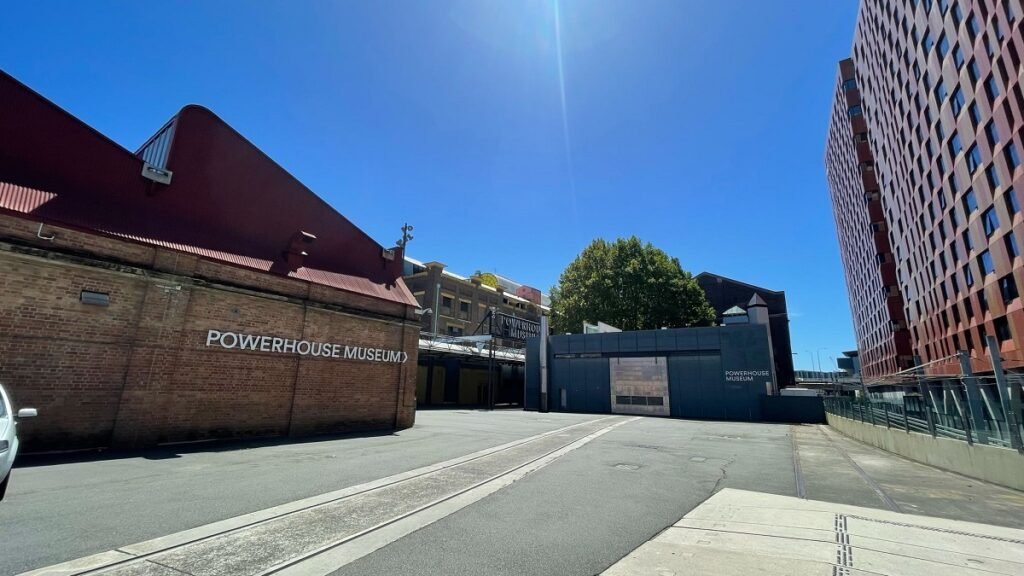
Key Features and Attractions:
- Diverse Exhibitions: The Powerhouse Museum hosts a wide range of permanent and temporary exhibitions covering various themes, including:
- Science and Space: Exhibits on astronomy, physics, and space exploration.
- Technology and Transport: Displays featuring historic and modern transportation, engineering marvels, and technological innovations.
- Design and Fashion: Showcases of evolution, history, and influential designers.
- Social History and Culture: Exhibitions exploring Australian history, culture, and social changes.
- Interactive Displays: The museum features many hands-on exhibits and displays that encourage visitors to engage directly with scientific principles and technological concepts.
- Iconic Objects: The museum’s collection includes iconic objects such as the Boulton & Watt steam engine, the Strasbourg Astronomical Clock, and a Catalina flying boat.
- Special Exhibitions and Events: The Powerhouse Museum regularly hosts special exhibitions, public programs, workshops, and events. These often include collaborations with international museums and contemporary artists.
Tips for Visiting the Powerhouse Museum:
- Getting There:
- Public Transport: The museum is easily accessible via public transport. Take a train to Central Station and walk to the museum, or use the light rail and exit at the Paddy’s Markets stop.
- Parking: Limited paid parking is available nearby. Consider using public transport to avoid parking difficulties.
- Best Times to Visit:
- Weekdays: Visit on weekdays for a quieter experience, particularly in the morning or early afternoon.
- Avoid Peak Hours: The museum can get busy on weekends, school holidays, and public holidays. Plan your visit during off-peak hours for a more relaxed experience.
- Ticket Information:
- Online Booking: Purchase tickets in advance to save time and potentially get a discount. Check the museum’s website for special offers and package deals.
- Membership: Consider a museum membership if you plan to visit multiple times. Membership often includes benefits like free entry, special event invitations, and discounts.
- Duration of Visit:
- Time Required: Allocate 2 to 3 hours to explore the museum fully. If you plan to participate in interactive exhibits and attend special events, allow additional time.
- Interactive and Educational Activities:
- Hands-On Exhibits: Engage with the museum’s numerous interactive displays and hands-on exhibits, designed to be educational and fun for children and adults.
- Workshops and Talks: Check the workshop, talk, and public program schedule. These sessions provide deeper insights into specific exhibits and themes.
- Photography Tips:
- Camera Ready: Bring a camera or smartphone to capture your visit. Many exhibits are visually striking and make for great photos.
- Lighting: Be mindful of indoor lighting conditions. Adjust your camera settings as needed for the best results. Note that some areas may have restrictions on flash photography.
- Dining and Facilities:
- Cafes and Shops: The museum has a café where you can enjoy refreshments. It also has a gift shop offering unique science—and technology-themed items, books, and souvenirs.
- Amenities: Restrooms, baby change facilities, and accessible services are available on-site. The museum is wheelchair accessible, with ramps and elevators for easy navigation.
- Special Exhibits and Programs:
- Check Schedules: Before your visit, look up event schedules and exhibition information to see if there are any special activities or temporary exhibits during your stay. I attended an exhibition of Egyptian mummies, which was pretty awesome.
- Family-Friendly Activities: The museum offers various activities and programs for families and children. Participate in these to enhance your visit.
Day 3: Blue Mountains and Jenolan Caves
Blue Mountains
- Time Required: 4-5 hours (including travel time)
- How to Get There: Take a train from Sydney to Katoomba.
- Ticket Information: Free to explore. Some attractions may have entry fees.
The Blue Mountains, located just outside Sydney, is a spectacular region known for its rugged landscapes, lush rainforests, and breathtaking vistas. Part of the Greater Blue Mountains World Heritage Area, this region offers a wealth of natural beauty and outdoor activities, making it a popular destination for day trips and extended stays.
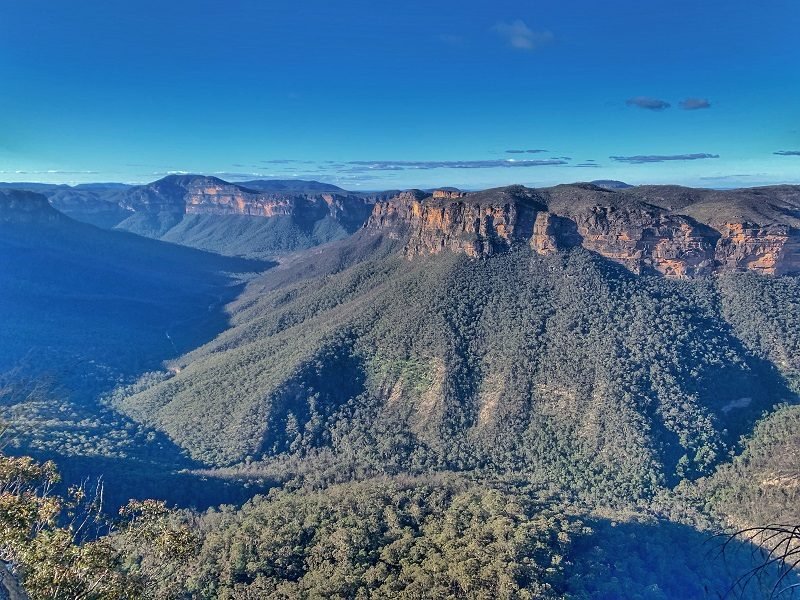
Key Features and Attractions:
- Scenic Views: The Blue Mountains are famous for their dramatic views and deep valleys. Lookouts such as Echo Point and Govetts Leap offer panoramic vistas of the Jamison Valley and the iconic Three Sisters rock formation.
- Three Sisters: This iconic rock formation is one of the most well-known landmarks in the Blue Mountains. Legend has it that a magical spell turned the Three Sisters to stone to protect them from danger.
- Bushwalking and Hiking Trails: The region features an extensive network of trails, ranging from easy walks to challenging hikes. Popular trails include the National Pass, Wentworth Falls, and the Grand Canyon Walk.
- Scenic World: Located in Katoomba, Scenic World offers a range of experiences, including the Scenic Railway, Scenic Skyway, and Scenic Cableway, which provide unique views of the Blue Mountains landscapes.
- Jenolan Caves: Situated in the southern part of the Blue Mountains, Jenolan Caves is a spectacular limestone cave system with guided tours showcasing its impressive formations and underground rivers.
- Leura Village: This charming village offers boutique shops, cafes, and gardens. It’s a pleasant spot to relax and explore local arts and crafts.
Tips for Visiting The Blue Mountains:
- Getting There:
- By Train: The Blue Mountains are easily accessible by train from Sydney. The journey from Sydney’s Central Station to Katoomba takes approximately 2 hours.
- By Car: Driving from Sydney to the Blue Mountains takes about 1.5 to 2 hours, depending on traffic and your destination. Several parking areas are near popular attractions and trailheads.
- What to Bring:
- Clothing: Dress in layers, as temperatures can vary. Wear comfortable, weather-appropriate clothing for hiking and outdoor activities.
- Footwear: Sturdy hiking boots or shoes with good grip are recommended for walking on uneven and sometimes slippery terrain.
- Supplies: Bring water, snacks, and sunscreen. A hat, map or GPS device, and a first aid kit are also useful.
- Safety and Navigation:
- Trail Information: Obtain trail maps and information from visitor centres or online resources. Follow marked trails and adhere to safety guidelines.
- Weather Conditions: Check weather forecasts before heading out. The weather in the Blue Mountains can change rapidly, so be prepared for various conditions.
- Activities and Experiences:
- Hiking: Explore the numerous hiking trails in the region. Popular hikes include the Six Foot Track, a multi-day trek, and easier walks like the Prince Henry Cliff Walk.
- Scenic Attractions: Visit Scenic World in Katoomba to experience the Scenic Railway and Skyway, which offer stunning views of the surrounding landscape.
- Cave Tours: Explore the Jenolan Caves to see impressive limestone formations. Various tours cater to different interests and fitness levels.
- Dining and Accommodation:
- Local Dining: The Blue Mountains offers various dining options, from casual cafes to fine-dining restaurants. Enjoy local produce and cuisine in towns like Katoomba and Leura.
- Accommodation: There are numerous accommodation options, including hotels, motels, and cosy cabins. Booking in advance is recommended, especially during peak seasons.
- Environmental Considerations:
- Respect Nature: Follow Leave No Trace principles. Avoid disturbing wildlife and stay on marked paths to protect the natural environment.
- Park Regulations: Adhere to park regulations and guidelines to ensure the safety and preservation of the area.
- Photography:
- Scenic Views: Capture the breathtaking landscapes, including the Three Sisters and valley views. Early morning or late afternoon light can enhance your photos.
- Wildlife: Photograph the diverse flora and fauna of the Blue Mountains, but be mindful of wildlife and maintain a respectful distance.
Jenolan Caves
- Time Required: 2-3 hours
- How to Get There: Drive or take a guided bus tour from Katoomba.
- Ticket Information: Book tours in advance. Prices vary by tour.
Jenolan Caves is one of Australia’s most spectacular and extensive cave systems, located in the southern part of the Blue Mountains. Renowned for its stunning limestone formations, underground rivers, and intricate cave passages, it is a must-visit destination for nature lovers and adventure enthusiasts. The caves are part of the Greater Blue Mountains World Heritage Area and offer a fascinating glimpse into the region’s natural beauty and geological history.
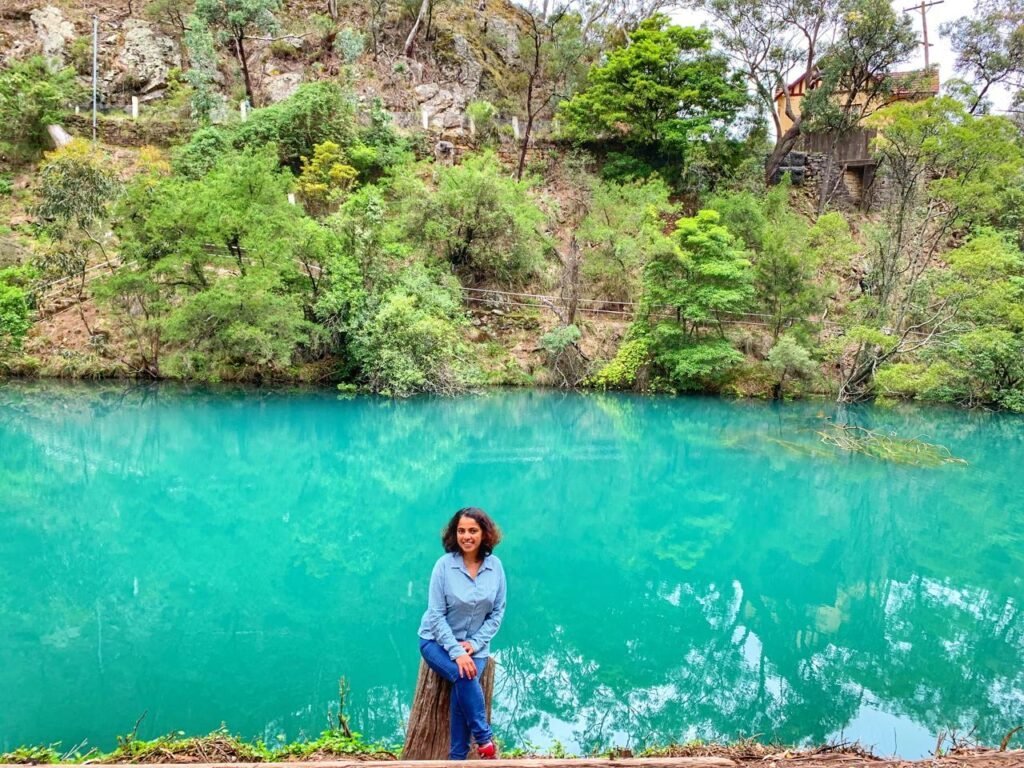
Key Features and Attractions:
- Limestone Formations: The caves are celebrated for their remarkable limestone formations, including stalactites, stalagmites, columns, and flowstones. Each cave features unique formations that have developed over millions of years.
- Underground Rivers: Jenolan Caves boasts several underground rivers, which create stunning cave features and contribute to the caves’ dynamic and ever-changing environment.
- Guided Tours: A range of guided tours is available, catering to different interests and fitness levels. Tours include the popular Lucas Cave, which showcases impressive formations, and the Adventure Tours for those seeking a more rugged experience.
- Historical Significance: The caves have a rich history, with their discovery dating back to the 19th century. They have been a site of exploration and scientific study, contributing to our understanding of karst landscapes.
- Accommodation: Jenolan Caves offers a range of accommodation options, including historic lodges and cottages, allowing you to stay overnight and fully immerse yourself in the cave experience.
Tips for Visiting Jenolan Caves:
- Getting There:
- By Car: Jenolan Caves is accessible from Sydney, and it is approximately a 2.5 to 3-hour drive. The route includes scenic mountain roads, so drive carefully and be prepared for winding roads.
- Public Transport: Public transport options are limited. It is best to drive or join a guided tour that includes transport from Sydney.
- Tour Information:
- Booking: Book your tours in advance, especially during peak seasons. Jenolan Caves can be busy, and pre-booking ensures availability and allows you to choose from various tours.
- Tour Types: Choose from standard, adventure, and specialised tours. Standard tours suit most visitors, while adventure tours may involve climbing, crawling, or exploring less accessible areas.
- What to Bring:
- Clothing: Wear comfortable, weather-appropriate clothing. For cave tours, wear layers as temperatures inside the caves can be cooler.
- Footwear: Sturdy, non-slip shoes are essential for navigating the cave paths and uneven surfaces. Avoid high heels or sandals.
- Camera: Bring a camera to capture the stunning cave formations. Some tours may have restrictions on photography, so check in advance.
- Safety and Navigation:
- Guided Tours: Always join a guided tour to ensure safety and to gain the most informative experience. The caves can be complex and challenging to navigate on your own.
- Health Considerations: If you have any health concerns, such as claustrophobia or mobility issues, inform the tour operator in advance so that they can choose a suitable tour for you.
- Environmental Considerations:
- Respect the Environment: Follow the guide’s instructions and avoid touching or disturbing the cave formations. The delicate environment is protected to preserve its natural beauty.
- Stay on Paths: To protect the cave system and ensure your safety, stick to designated paths and avoid venturing off-track.
- Accommodation and Dining:
- On-Site Accommodation: To enjoy the natural surroundings and avoid long travel times, consider staying at the Jenolan Caves Resort or nearby lodges. Book accommodation in advance.
- Dining: The Caves House offers dining options, including a café and restaurant serving a variety of meals and refreshments.
- Photography:
- Guidelines: Follow the tour guide’s rules regarding photography. Flash photography may not be allowed as it can damage the delicate formations.
- Camera Equipment: Use a camera with good low-light capabilities to capture the cave’s beauty without disturbing the natural environment.
Day 4: Manly and Shelly Beach
Manly Beach
- Time Required: 2-3 hours
- How to Get There: Take a ferry from Circular Quay.
- Ticket Information: Ferry tickets can be purchased at Circular Quay or online.
Manly Beach, located in the northern suburbs of Sydney, is one of the city’s most iconic and popular beaches. Renowned for its stunning natural beauty, vibrant atmosphere, and diverse recreational activities, it is a favourite destination for both locals and visitors.
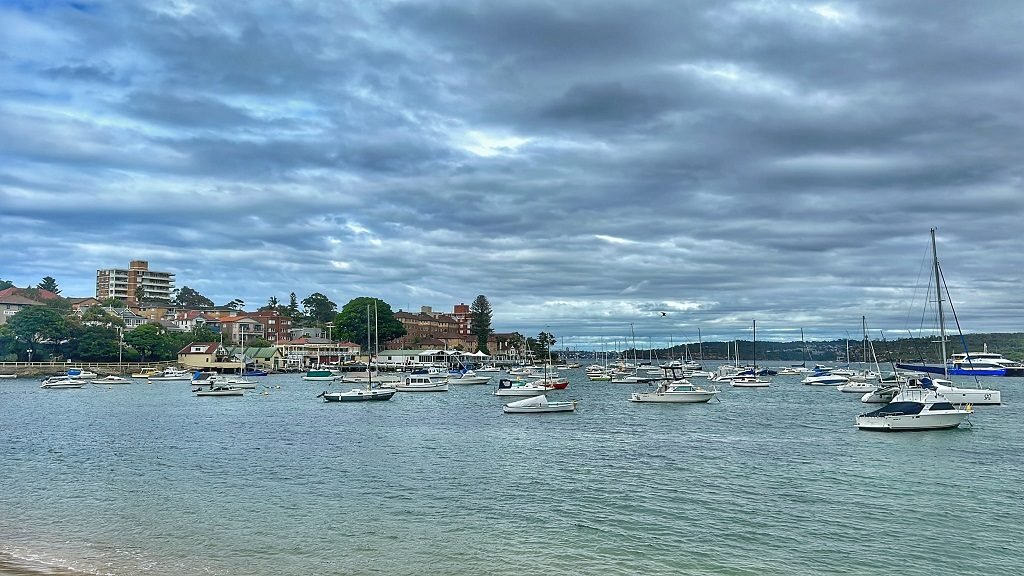
Key Attractions and Features:
- Golden Sands: Manly Beach is famous for its wide, sandy shoreline and clear blue waters. It is ideal for sunbathing, swimming, and beach volleyball and offers a classic Australian beach experience.
- Surfing: Known for its consistent surf conditions, Manly Beach is a hotspot for surfers of all levels. Surf schools and rental shops are available for those looking to learn or improve their skills.
- Manly Corso: The Corso is a lively pedestrian thoroughfare between the beach and Manly Wharf. It features a variety of shops, cafes, restaurants, and bars, making it a popular spot for dining and shopping.
- Manly Scenic Walkway: This scenic coastal walk stretches from Manly to Spit Bridge, offering breathtaking views of the harbour and coastline. The trail passes through natural bushland, rocky outcrops, and picturesque beaches.
Tips for Visiting Manly Beach:
- Getting There:
- Ferry: The most scenic way to reach Manly Beach is by ferry from Circular Quay. The ferry ride offers stunning views of Sydney Harbour and takes about 30 minutes. Manly Wharf is a short walk from the beach.
- Bus: Buses from the city centre also connect to Manly Beach. Depending on traffic, the journey typically takes around 40 minutes.
- Car: Limited parking is available near the beach and can be busy, especially on weekends. Consider public transport to avoid parking hassles.
- Beach Activities:
- Swimming and Surfing: The beach is patrolled by lifeguards, and designated swimming areas are marked. Follow safety signs and swim between the flags for a safe experience.
- Beach Volleyball: Volleyball courts are available for public use. Bring your equipment or check local rental shops.
- Dining and Shopping:
- The Corso: Explore The Corso for various dining options, from casual cafes to seafood restaurants. Enjoy the vibrant atmosphere and street performers.
- Local Shops: The area around The Corso offers various shops, including boutiques, surf stores, and souvenir shops. It’s a great place to pick up beachwear or gifts.
- Exploring the Area:
- Manly Scenic Walkway: This walk offers spectacular views and a chance to experience Sydney’s natural beauty. You can complete the full trail in a few hours or enjoy shorter sections.
- North Head Lookout: For panoramic views of the Sydney skyline and Pacific Ocean, visit North Head Lookout. It’s a short drive or a longer walk from Manly Beach.
- Family-Friendly Activities:
- Playgrounds: Near the beach are playgrounds and picnic areas, making it suitable for families with children.
- Manly Aquatic Centre: Located nearby, this facility offers families swimming pools and other recreational activities.
- Photography:
- Sunrise and Sunset: Capture the beauty of Manly Beach during sunrise or sunset for stunning lighting and colourful skies.
- Harbour Views: For classic Sydney shots, photograph the beach, surf, and the ferry arriving at Manly Wharf.
- Events and Festivals:
- Beach Events: Manly Beach hosts various events throughout the year, including surf competitions, beach festivals, and cultural celebrations. Check local event listings for current activities.
- Markets: Visit local markets, such as the Manly Markets held on weekends, for artisanal goods, crafts, and food.
- Safety and Facilities:
- Lifeguards: Lifeguards are on duty during patrol hours. Follow their advice and adhere to safety flags and warnings.
- Amenities: Facilities include public restrooms, showers, and changing rooms. Beachside cafes and kiosks offer refreshments and snacks.
Shelly Beach
- Time Required: 1-2 hours
- How to Get There: Short walk from Manly Beach.
- Ticket Information: Free entry.
Shelly Beach, located in Manly, Sydney, is a prime spot for snorkelling due to its clear waters, diverse marine life, and sheltered environment. The beach is renowned for its vibrant underwater ecosystem, making it a popular destination for novice and experienced snorkelers.
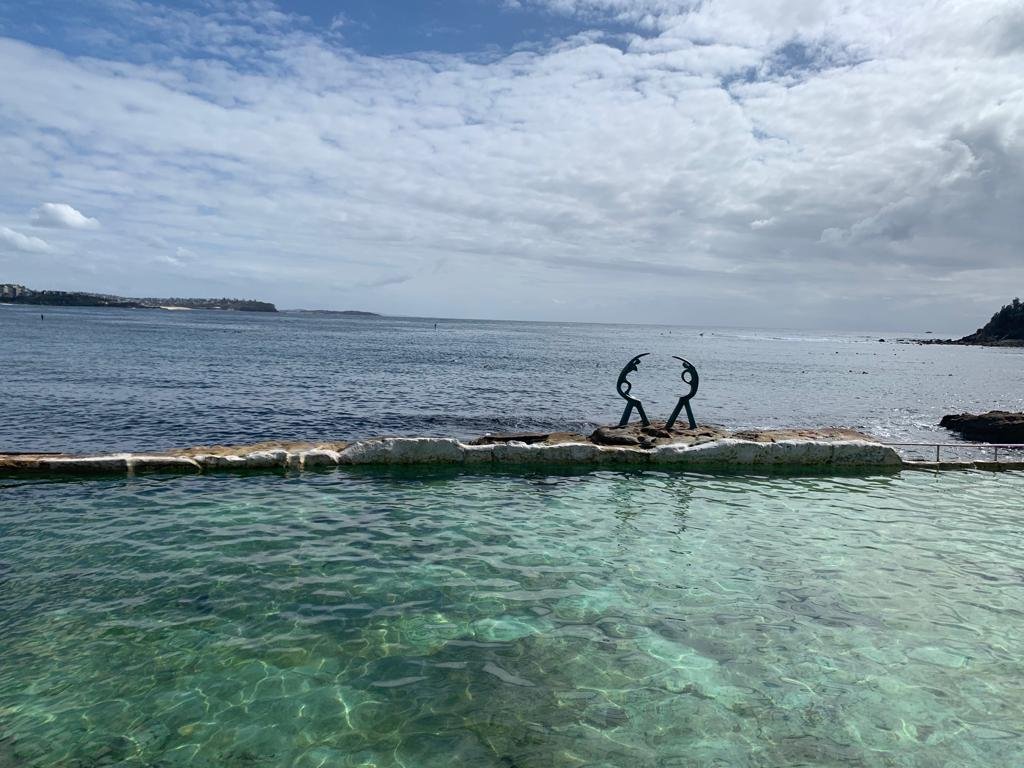
Key Features:
- Marine Life: Shelly Beach is home to various marine species, including colourful fish, sea urchins, and occasionally stingrays and cuttlefish. The underwater environment provides an excellent opportunity to observe Sydney’s marine biodiversity.
- Clear Waters: Shelly Beach’s water is typically clear, offering good visibility for snorkelling. The beach’s calm and protected waters make it ideal for underwater exploration.
- Marine Reserve: The area around Shelly Beach is part of the Cabbage Tree Bay Aquatic Reserve, which helps protect the marine environment and ensures a healthy ecosystem. Snorkelers can enjoy a well-preserved underwater habitat.
- Shallow Reef: The reef near Shelly Beach is relatively shallow, making it accessible for snorkelers of all skill levels. The shallow waters allow for easy exploration and a close-up view of marine life.
Tips for Snorkeling at Shelly Beach:
- Getting There:
- Public Transport: Take the ferry from Circular Quay to Manly Wharf. From there, it’s a short walk to Shelly Beach. Alternatively, you can take a bus or drive to Manly and follow signs to Shelly Beach.
- Parking: Limited parking is available near the beach. It can be busy, especially on weekends, so consider using public transport if possible.
- Snorkeling Equipment:
- Gear Rental: Snorkeling gear can be rented from shops in Manly. For the best experience, ensure you have a well-fitting mask, snorkel, and fins.
- Wetsuits: Depending on the season and water temperature, you may want to wear a wetsuit for added comfort and warmth.
- Safety Tips:
- Swim Between the Flags: Although Shelly Beach is generally safe, always swim and snorkel in designated areas. Pay attention to any safety warnings or conditions posted.
- Buddy System: Snorkel with a buddy for safety. It’s essential to have someone with you in case of any issues or emergencies.
- Avoid Touching Marine Life: Respect the marine environment by not touching or disturbing marine creatures. This helps protect both the wildlife and their habitat.
- Best Times to Snorkel:
- Morning: Early mornings often provide the best visibility and fewer crowds. The water tends to be calmer and clearer before the day heats up.
- Tide and Weather: Check tide times and weather conditions before heading out. Snorkelling is best done during calm weather and low to mid-tide when visibility is at its peak.
- Environmental Considerations:
- Marine Reserve Rules: Follow the rules of the marine reserve, including not removing or disturbing marine life. Support conservation efforts by practising responsible snorkelling.
- Trash and Pollution: Help keep the beach and underwater environment clean by carrying out any trash you bring and avoiding using single-use plastics.
- Facilities and Amenities:
- Changing Rooms: Shelly Beach has amenities like public restrooms and showers. There are also picnic areas and barbecues for a post-snorkeling meal.
- Food and Drink: There are cafes and eateries near Shelly Beach where you can grab a bite or drink before or after snorkelling.
- Photography:
- Underwater Cameras: Consider using an underwater camera or GoPro to capture the vibrant marine life and clear waters. Make sure the camera is waterproof and suitable for snorkelling conditions.
- Respect Wildlife: If photographing marine life, ensure you do so from a respectful distance to avoid disturbing the animals.
Manly to Spit Bridge Walk
- Time Required: 4-5 hours
- How to Get There: Start at Manly Beach and walk towards Spit Bridge.
- Ticket Information: Free.
The Manly to Spit Bridge Walk is a picturesque coastal trail in Sydney. It spans approximately 10 kilometres and is renowned for its diverse scenery, making it one of Sydney’s most popular hiking routes. The walk offers stunning views of the harbour, natural bushland, and beautiful beaches.
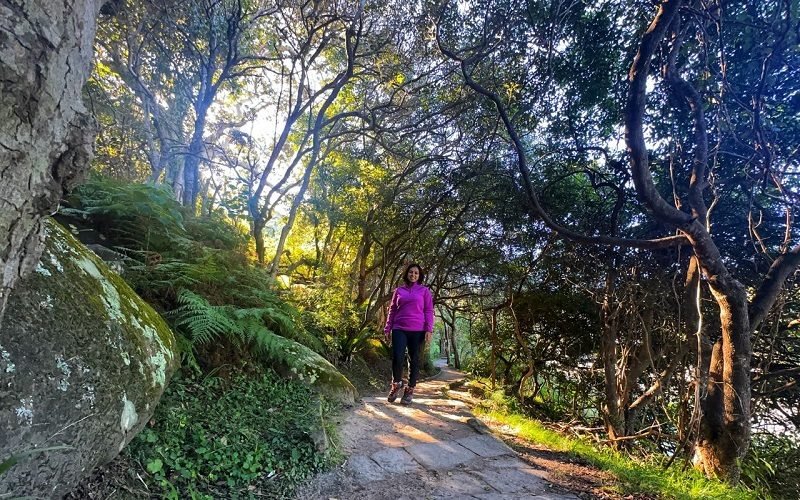
Key Features and Attractions:
- Scenic Views: The trail provides breathtaking views of Sydney Harbour, including glimpses of the city skyline, serene bays, and rocky outcrops. Photogenic spots along the route capture the natural beauty of the coastline.
- Beaches and Bays: The walk passes several charming beaches and bays, such as Clontarf Beach and Balmoral Beach. These spots are perfect for a relaxing break or a swim.
- Bushland and Coastal Tracks: The trail meanders through lush bushland, featuring native flora and fauna. The path includes paved and natural tracks, offering a varied hiking experience.
- Historic Sites: Along the walk, you’ll encounter historical sites such as the old military bunkers and forts from World War II, adding a historical dimension to your journey.
- Spit Bridge: The walk concludes at the Spit Bridge, a notable bridge connecting the northern suburbs of Sydney. The bridge offers an excellent viewpoint and marks the end of the trail.
Tips for Completing the Walk:
- Planning Your Walk:
- Duration: The entire walk typically takes about 4 to 5 hours, depending on your pace and the number of stops you make.
- Difficulty: The trail is moderately challenging, with some uphill sections and uneven terrain. It is suitable for most walkers with a reasonable level of fitness.
- Getting There:
- Starting Point: Begin the walk at Manly Wharf, which is easily accessible by ferry from Circular Quay. The wharf is a short walk from the beach and the start of the trail.
- Ending Point: The walk ends at Spit Bridge, which can be reached by bus or car from the city centre. Bus routes such as the 135 and 136 connect Spit Bridge with other parts of Sydney.
- What to Bring:
- Footwear: Wear comfortable, sturdy walking shoes or hiking boots to handle uneven terrain and provide good support.
- Water and Snacks: Carry sufficient water to stay hydrated and pack snacks for energy during the walk.
- Sun Protection: Wear sunscreen, a hat, and sunglasses to protect yourself from the sun, especially on sunny days.
- Safety and Navigation:
- Trail Markers: Follow the trail markers and signs along the path to stay on the correct route. The walk is well-marked, but a map or GPS device can be helpful.
- Weather: Check the weather forecast before starting the walk. Avoid the trail during heavy rain or extreme weather conditions.
- Breaks and Rest Stops:
- Picnic Spots: Several scenic spots and picnic areas along the route offer places to take a break and enjoy the views.
- Facilities: Some areas, like Clontarf Beach, have amenities such as restrooms and cafes where you can rest and refresh.
- Environmental Considerations:
- Leave No Trace: Respect the natural environment by carrying out all your trash and avoiding disturbances to wildlife.
- Dog Policy: Dogs are allowed on the trail but must be kept on a leash. Clean up after your pet to keep the trail clean.
- Additional Activities:
- Swimming: Visit some of the beaches along the route, such as Clontarf Beach or Balmoral Beach, to enjoy a swim.
- Historical Sites: Explore the bunkers and forts along the trail to glimpse Sydney’s wartime history.
Day 5: Bondi Beach and Coogee
Coogee to Bondi Walk
- Time Required: 2-3 hours
- How to Get There: Start at Coogee Beach. There are buses from Town Hall to Coogee Beach.
- Ticket Information: Free.
The Coogee to Bondi Beach Walk is a stunning coastal hike along Sydney’s eastern suburbs, renowned for its picturesque views, diverse scenery, and vibrant beach culture. Stretching approximately 6 kilometres, this popular trail offers an opportunity to experience some of Sydney’s most beautiful beaches and natural landscapes.
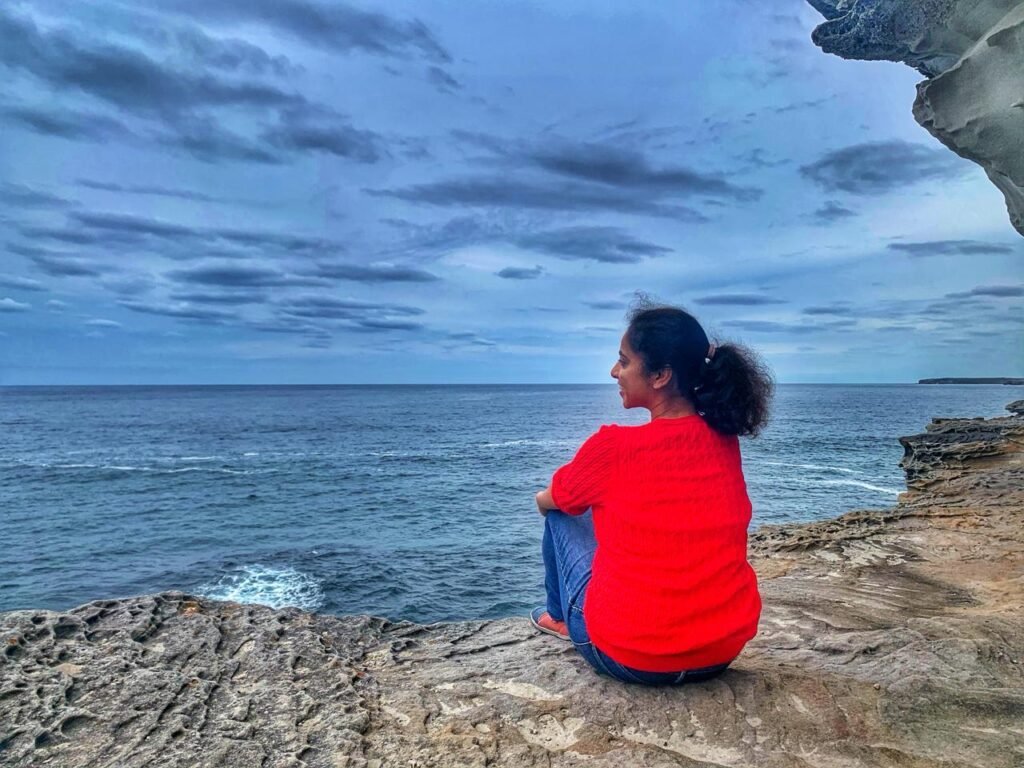
Key Features and Attractions:
- Scenic Coastal Views: The walk features breathtaking views of the Pacific Ocean, rugged cliffs, and sandy coves. The trail provides numerous photo opportunities and panoramic vistas along the way.
- Beaches and Bays: The walk passes several beautiful beaches and bays, including Coogee Beach, Gordons Bay, Clovelly Beach, Bronte Beach, and Tamarama Beach. Each beach has its unique character and is ideal for swimming, sunbathing, and relaxing.
- Historic Sites: Along the route, you’ll find historic landmarks and heritage sites, such as old baths and memorials. These sites add cultural and historical interest to the walk.
- Parks and Green Spaces: The trail includes several parks and open spaces, providing spots for picnics and rest. The lush vegetation and landscaped gardens enhance the walk’s natural appeal.
- Bondi Beach: The walk concludes at Bondi Beach, one of Sydney’s most famous beaches. Bondi Beach offers a vibrant atmosphere, various dining options, and plenty of shopping opportunities.
Tips for Completing the Walk:
- Planning Your Walk:
- Duration: The walk typically takes 2 to 3 hours, depending on your pace and the time spent at each beach or attraction.
- Difficulty: The trail is generally easy to moderate, with some sections of stairs and inclines. It is suitable for most walkers with a reasonable level of fitness.
- Getting There:
- Starting Point: Begin the walk at Coogee Beach, which can be reached by bus or car from the city centre. There is parking available near the beach.
- Ending Point: The walk ends at Bondi Beach, which is well-connected by public transport and accessible by bus or train from the city centre.
- What to Bring:
- Footwear: Wear comfortable walking shoes or sandals for uneven terrain and wet surfaces.
- Water and Snacks: Carry sufficient water to stay hydrated and pack snacks for energy during the walk.
- Sun Protection: Use sunscreen, wear a hat, and bring sunglasses to protect yourself from the sun.
- Safety and Navigation:
- Trail Markers: Follow the well-marked path and signs along the route. The trail is well-maintained and easy to navigate.
- Weather: Check the weather forecast before starting the walk. Avoid the trail during heavy rain or strong winds, as some sections can be slippery.
- Breaks and Rest Stops:
- Beaches: Take breaks at the various beaches along the route to enjoy the sand, sea, and scenic views. Many beaches have facilities such as restrooms and cafes.
- Parks: Relax in the parks and open spaces for a rest or picnic. These areas provide a chance to unwind and enjoy the surroundings.
- Environmental Considerations:
- Leave No Trace: Respect the natural environment by carrying out any trash you bring and avoiding the disturbance of wildlife and plant life.
- Dog Policy: Dogs are allowed on the trail but must be kept on a leash. Clean up after your pet to keep the trail clean.
- Photography:
- Scenic Spots: Capture the trail’s stunning coastal views, beach scenes, and natural beauty. Early morning or late afternoon light often provides the best conditions for photography.
- Landmarks: Photograph historic sites, memorials, and the iconic Bondi Beach as part of your walk.
- Additional Activities:
- Swimming: Swimming at the beaches along the route, such as Coogee Beach or Bondi Beach. The waters are typically safe but always follow safety guidelines.
- Dining and Shopping: Explore the dining options at Bondi Beach and enjoy local cafes, restaurants, and shops.
Bondi Beach
- Time Required: 2-3 hours
- How to Get There: Take a bus or train to Bondi Junction, then take a short bus ride to the beach.
- Ticket Information: Free.
Bondi Beach is one of Sydney’s most iconic and renowned beaches, celebrated for its golden sands, surf culture, and vibrant atmosphere. Located just 7 kilometres east of the Sydney central business district, Bondi Beach is a hub of activity and a must-visit destination for tourists and locals.
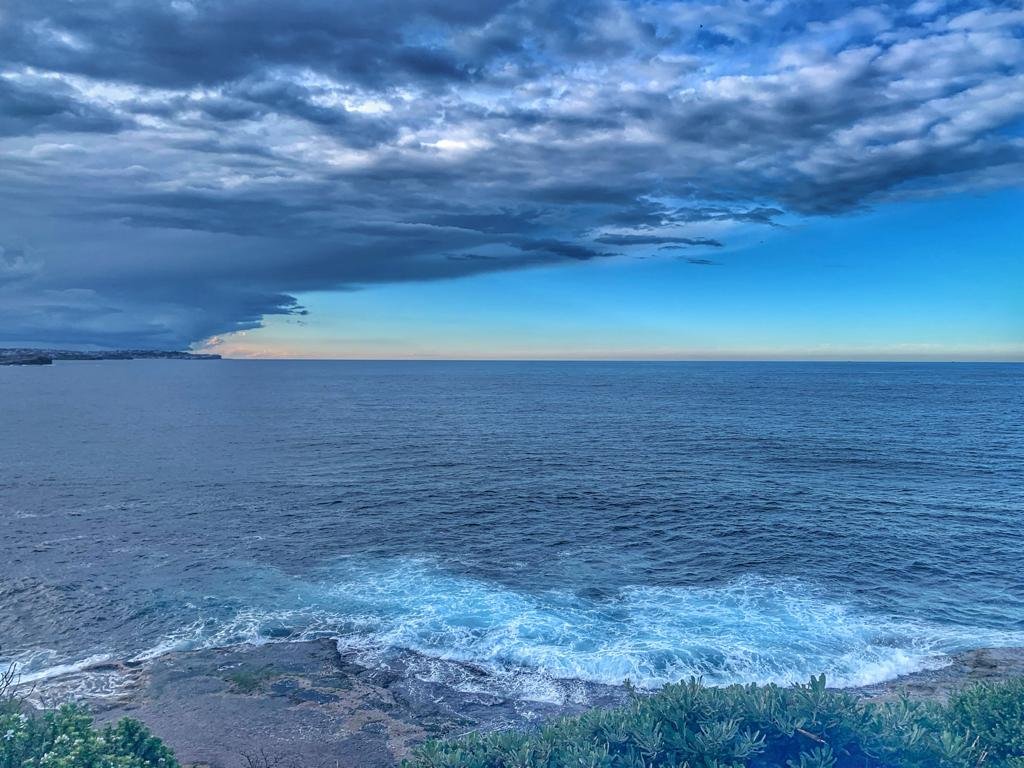
Key Attractions and Features:
- Golden Sands and Surf: Bondi Beach is famous for its wide, sandy shoreline and consistent surf conditions. It’s a popular spot for swimming, sunbathing, and surfing. The beach is patrolled by lifeguards, ensuring a safe environment for beachgoers.
- Bondi to Coogee Walk: This scenic coastal walk stretches 6 kilometres from Bondi Beach to Coogee Beach. The trail offers stunning ocean views, picturesque bays, and diverse coastal landscapes. It’s a great way to explore Sydney’s eastern suburbs and enjoy the coastline’s natural beauty.
- Bondi Icebergs Pool: Situated at the southern end of Bondi Beach, the Bondi Icebergs Club features a famous oceanfront swimming pool that overlooks the surf. It’s an iconic Sydney landmark and offers both a seasonal and an all-year-round pool for members and visitors.
- Bondi Markets: Held every Saturday, Bondi Markets offers a variety of goods, including fashion, art, jewellery, and food. It’s a vibrant market with a lively atmosphere, perfect for finding unique items and enjoying local cuisine.
- Surf Schools: Bondi Beach is a popular location for surf schools. Whether you’re a beginner or looking to improve your skills, numerous surf schools and rental shops offer lessons and equipment.
Tips for Visiting Bondi Beach:
- Getting There:
- Public Transport: Bondi Beach is accessible via bus from Bondi Junction, a major transport hub connected to the city centre. The journey takes about 20 minutes from Bondi Junction to the beach.
- Car: Limited parking is available around Bondi Beach. Parking can be challenging on weekends, so consider using public transport or arriving early to secure a spot.
- Beach Activities:
- Swimming and Surfing: The beach is known for its excellent surfing conditions. Follow the safety flags and swim in designated areas. For surfing, check local conditions and consider taking a lesson if you’re new to the sport.
- Sunbathing: Bondi Beach is ideal for relaxing on the sand and enjoying the sun. Be sure to use sunscreen and stay hydrated.
- Dining and Shopping:
- Restaurants and Cafes: Bondi Beach has diverse dining options, from casual cafes and beachfront eateries to fine dining restaurants. Enjoy fresh seafood, international cuisine, or a coffee with ocean views.
- Local Shops: The area around Bondi Beach features numerous boutiques, surf shops, and souvenir stores. Explore the shops for beachwear, local crafts, and unique gifts.
- Exploring the Area:
- Bondi to Coogee Walk: Take advantage of the Bondi to Coogee Walk to experience stunning coastal scenery and discover secluded beaches and coves. The walk can take 2-3 hours, depending on your pace and stops.
- Bondi Icebergs: Visit the Bondi Icebergs Club to experience one of Sydney’s most iconic swimming pools. You can access the pool for a fee or enjoy the view from the adjacent café.
- Family-Friendly Activities:
- Playgrounds: Bondi Beach has several playgrounds and family-friendly amenities, making it a great spot for a day out with children.
- Bondi Pavilion: The Bondi Pavilion hosts cultural events, exhibitions, and performances. Check the schedule for family-friendly activities and community events.
- Photography:
- Scenic Views: Capture the beauty of Bondi Beach, including its waves, surf, and vibrant beach scene. Early morning and late afternoon offer the best light for photography.
- Bondi Icebergs: The Bondi Icebergs pool provides a unique photo backdrop with its striking location on the ocean’s edge.
- Events and Festivals:
- Bondi Festival: Bondi Beach hosts various festivals and events throughout the year, including the Bondi Festival and cultural celebrations. Check local event listings for current activities.
- Sculpture by the Sea: Held annually along the Bondi to Coogee Walk, this outdoor sculpture exhibition features artworks displayed along the coastal path.
- Safety and Facilities:
- Lifeguards: Lifeguards are on duty during patrol hours. Follow their advice and swim between the flags for a safe beach experience.
- Amenities: Bondi Beach offers public restrooms, showers, and changing rooms. There are also numerous cafés and shops nearby for convenience.
Street Art in Bondi
- Time Required: 1 hour
- How to Get There: Walk around Bondi Beach and the surrounding streets.
- Ticket Information: Free.
Bondi Beach is famous for its golden sands, surf culture, and vibrant and dynamic street art scene. The Bondi Beach Sea Wall and other spots around the area showcase a rotating collection of murals and graffiti by local and international artists. This open-air gallery offers a colourful, engaging backdrop that adds to Bondi’s unique character.
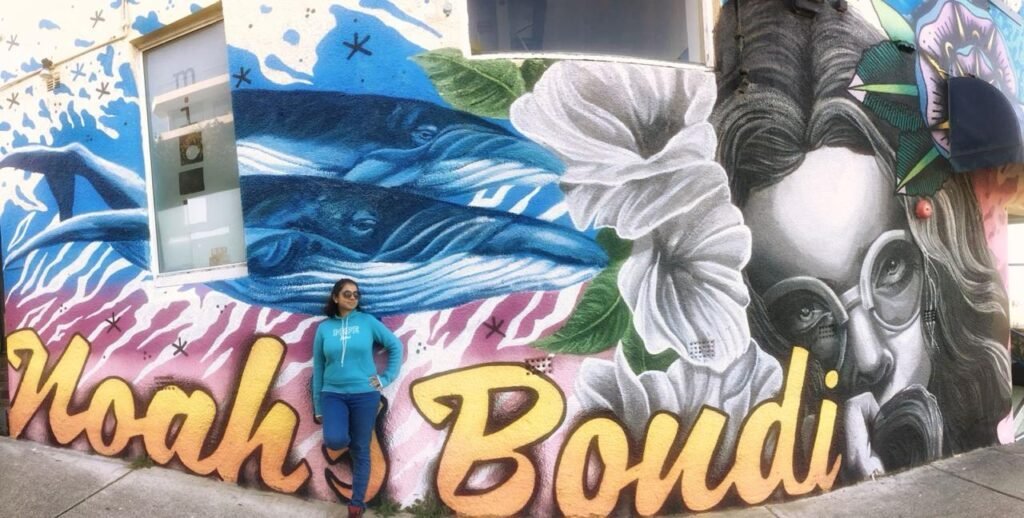
Key Features and Attractions:
- Bondi Beach Sea Wall: The Sea Wall stretches along the promenade at Bondi Beach and is the most famous spot for street art. It has been a canvas for artists since the late 1970s, featuring murals that reflect a range of styles and themes, from political statements to surf culture and abstract art.
- Rotating Exhibits: The murals on the Sea Wall are frequently updated, ensuring there is always something new to see. This constant rotation keeps the art fresh and exciting, and each visit can offer a completely different visual experience.
- Local and International Artists: The Sea Wall and surrounding areas attract renowned and emerging artists worldwide. This blend of local talent and international influence creates a diverse and rich tapestry of street art.
- Community Engagement: Street art in Bondi often engages with the local community, featuring collaborations and projects that involve residents and visitors. This engagement fosters a sense of ownership and pride in the local art scene.
Tips for Exploring Street Art in Bondi:
- Getting There:
- Public Transport: Bondi Beach is easily accessible by public transport. Take a train to Bondi Junction and then a bus to Bondi Beach. Several bus routes serve the area.
- Parking: Paid parking is available near Bondi Beach, but it can be limited, especially on weekends. Consider using public transport to avoid parking difficulties.
- Best Times to Visit:
- Early Morning or Late Afternoon: Visit early or late in the afternoon for the best light for photography and to avoid the crowds.
- Weekdays: Weekdays are generally less crowded than weekends, making exploring and enjoying the art leisurely easier.
- Exploring the Area:
- Walking Tour: Stroll along the Bondi Beach promenade to view the Sea Wall murals. The walk is flat and accessible, making it suitable for all ages.
- Beyond the Sea Wall: Don’t limit your exploration to the Sea Wall. Street art can be found around Bondi in laneways, buildings, and other unexpected spots. Keep an eye out as you wander through the area.
- Photography Tips:
- Lighting: The best lighting for photographing the murals is in the early morning or late afternoon when the sunlight is softer. Avoid midday when the light can be harsh.
- Angles and Perspectives: Experiment with different angles and perspectives to capture the details and scale of the artwork. Including the beach or ocean in the background can add an exciting element to your photos.
- Respect the Art:
- Do Not Vandalise: Respect the artwork by not vandalising or defacing it. Appreciate the effort and creativity that goes into each mural.
- Stay Informed: Some murals may have specific cultural or political significance. Learn about the artists and the messages behind their work.
- Dining and Refreshments:
- Cafes and Restaurants: Bondi Beach has a wide range of cafes, restaurants, and bars where you can relax and enjoy a meal or drink after exploring the street art. Many establishments offer outdoor seating with views of the beach and promenade.
- Picnic: Consider bringing a picnic and enjoying it on the grassy areas near the beach. It’s a great way to appreciate the art in the surroundings.
- Events and Festivals:
- Art Festivals: Bondi hosts various art and cultural festivals throughout the year, some of which feature live mural painting and street art events. Check the local event calendar to see if festivals coincide with your visit.
- Engage with the Community:
- Meet the Artists: Occasionally, artists can be seen working on new murals. Take the opportunity to watch them in action and, if appropriate, engage in a conversation about their work.
- Workshops and Tours: Look out for street art workshops and guided tours that offer deeper insights into the art and artists of Bondi.
Day 6: Surry Hills and Chinatown Exploration
Chinatown
- Time Required: 2-3 hours
- How to Get There: Walk or take a bus/light rail to Haymarket.
- Ticket Information: Free to explore; pay for meals and shopping.
Chinatown in Surry Hills is a vibrant district in Sydney known for its rich cultural heritage, bustling markets, and diverse dining options. While traditionally associated with Haymarket in the city’s Central Business District (CBD), the Surry Hills area has also developed a dynamic Chinatown scene, offering a unique blend of traditional Asian culture and contemporary urban life.
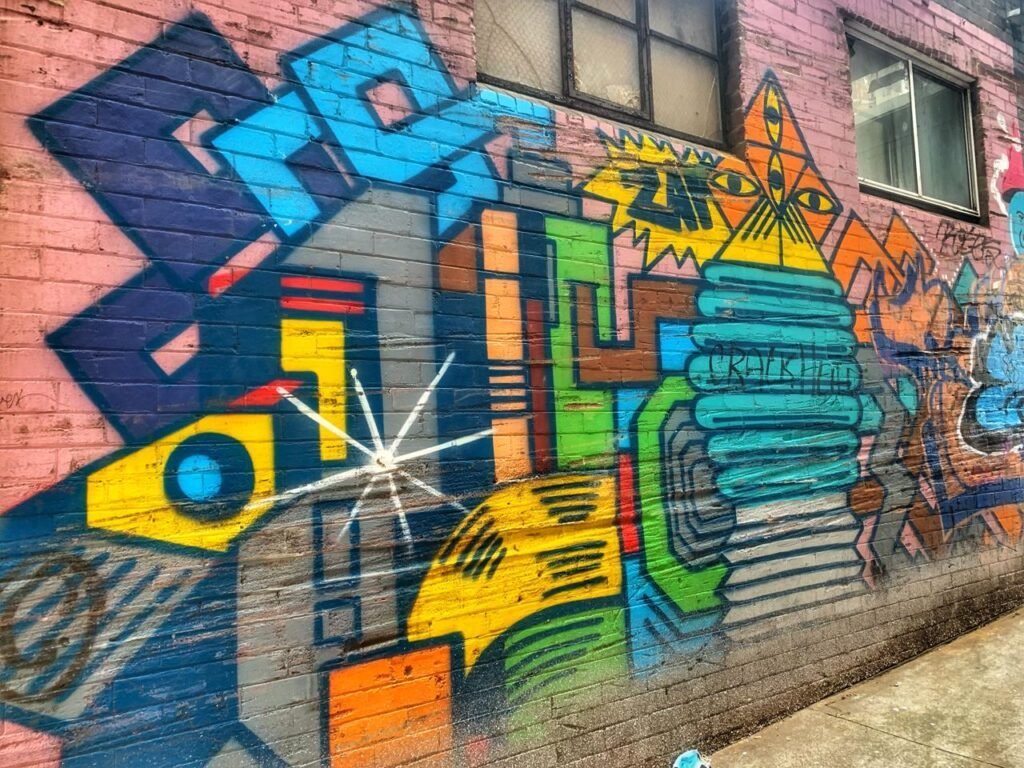
Key Features and Attractions:
- Cultural Diversity: Surry Hills’ Chinatown reflects Sydney’s multicultural fabric, featuring a range of Asian cuisines, markets, and cultural festivals. It provides a more relaxed and less touristy alternative to the larger Chinatown in Haymarket.
- Dining: The area boasts various restaurants and eateries offering authentic dishes from different regions, including Chinese, Thai, Vietnamese, and Korean cuisines. Popular spots include traditional dim sum houses, noodle bars, and modern fusion restaurants.
- Markets: Explore local markets and food stalls offering fresh produce, Asian ingredients, and specialty products. These markets are great for experiencing the flavours and aromas of Asian cuisine.
- Cultural Events: The district hosts various cultural events and festivals throughout the year, such as Chinese New Year celebrations and food festivals, showcasing traditional performances and activities.
- Shopping: Surry Hills blends traditional shops and contemporary retail experiences. Discover shops and boutiques selling Asian groceries, herbs, and specialty items.
Tips for Visiting Chinatown in Surry Hills:
- Getting There:
- Public Transport: Surry Hills is well-connected by public transport. Take a train to Central Station or a bus to nearby stops, and it’s a short walk to the Chinatown area.
- Walking: The district is easily walkable, and its central location makes it convenient to explore on foot.
- Dining Recommendations:
- Variety: Try a range of eateries to experience the diverse Asian cuisines available. Look for popular local spots and recommendations from locals.
- Reservations: Make early reservations to avoid long waits during peak dining times, such as weekends or festival periods.
- Shopping Tips:
- Market Hours: Markets and shops often close early in the evening, so visit during the day to fully explore the offerings.
- Bargaining: In some markets, bargaining may be accepted, especially for non-food items. Be polite and respectful when negotiating prices.
- Cultural Etiquette:
- Respect Traditions: Be mindful of cultural practices and traditions. For example, follow local customs and respect cultural performances and festival ceremonies.
- Politeness: Always be courteous and respectful to shopkeepers and restaurant staff. A friendly attitude is appreciated.
- Exploration Tips:
- Walking Tours: Consider taking a walking tour to learn more about the area’s history and cultural significance. Local guides can provide insights and context.
- Local Tips: Ask locals for recommendations on hidden gems and lesser-known spots to make the most of your visit.
- Events and Festivals:
- Festivals: Check the local calendar for upcoming cultural events and festivals. Participating in these celebrations can help you better understand the district’s cultural heritage.
- Chinese New Year: If you visit during this time, you will experience vibrant Chinese New Year celebrations, with traditional performances, food stalls, and street parades.
Surry Hills Pub Hopping
- Time Required: 3-4 hours
- How to Get There: Take a train to Central Station, then walk or take a bus.
- Ticket Information: Free to explore; pay for drinks and food.
Surry Hills, a trendy suburb in Sydney, is renowned for its vibrant nightlife and diverse pub scene. With a mix of historic pubs, modern bars, and cosy beer gardens, Surry Hills offers an excellent opportunity for pub hopping, where you can enjoy various drinks, food, and entertainment. The area is popular among locals and visitors for its lively atmosphere and eclectic mix of venues.
Key Features and Attractions:
- Historic Pubs: Surry Hills has several historic pubs that glimpse Sydney’s past. These establishments often feature traditional décor, classic pub fare, and a welcoming atmosphere.
- Craft Beer and Cocktails: The suburb boasts a range of venues specialising in craft beers, innovative cocktails, and fine wines. Many pubs and bars feature rotating tap lists and signature drinks.
- Live Music and Entertainment: Some pubs and bars in Surry Hills offer live music, DJs, and other entertainment options. Enjoy a lively night out with local bands and performers.
- Dining Options: Many pubs in Surry Hills have extensive food menus, ranging from casual snacks and pub classics to gourmet dishes. Explore the culinary offerings alongside your drinks.
Tips for Pub Hopping in Surry Hills:
- Plan Your Route:
- Popular Pubs: Start with a list of popular pubs and bars in Surry Hills. Consider visiting venues such as The Beresford, The Clock Hotel, The Tudor Hotel, and The White Horse.
- Map Out Stops: Plan a route that allows you to visit several places within walking distance. Surry Hills is compact and walkable, making it ideal for pub hopping.
- Timing and Peak Hours:
- Early Evening: Begin your pub hopping in the early evening to avoid long queues and secure a good spot. Pubs and bars can get busy later in the night.
- Peak Times: Weekends and evenings after work are typically busier. If you prefer a quieter experience, visit on weekdays or earlier in the evening.
- Safety and Transport:
- Public Transport: Use public transport or rideshare services to get to and from Surry Hills, especially if you plan to consume alcohol. Avoid drinking and driving.
- Walk Safely: If walking between venues, be aware of your surroundings and stay in well-lit areas.
- Drink Responsibly:
- Pacing: Pace yourself and drink water between alcoholic beverages to stay hydrated. Enjoy the experience responsibly and be mindful of your limits.
- Food: Eat food to complement your drinks. Many pubs offer substantial meals, which can help you absorb alcohol and enhance your experience.
- Social Etiquette:
- Respect Staff: Be courteous to bar staff and other patrons. Friendly interactions contribute to a positive atmosphere and enjoyable experience.
- Tipping: Tipping is appreciated but not obligatory. A small tip can be a nice gesture if you receive excellent service.
- Local Recommendations:
- Ask Locals: Ask locals or staff at your first stop for the best pub recommendations and insider tips. They can provide valuable insights into hidden gems and popular spots.
- Check Reviews: Use online reviews and guides to find highly recommended pubs and bars in Surry Hills.
- Events and Specials:
- Check for Specials: Many pubs offer daily or weekly specials on drinks and food. Look out for happy hour deals or themed nights.
- Events: Look for special events, such as trivia nights or live music performances, that can add to the fun of your pub-hopping adventure.
Day 7: Markets and Shopping
Paddy’s Market
- Time Required: 1-2 hours
- How to Get There: Take a light rail or bus to Haymarket.
- Ticket Information: Free entry; pay for purchases.
Paddy’s Market is bustling and iconic in the heart of Sydney’s Haymarket district. Established in 1854, it is one of Sydney’s oldest and most vibrant markets, offering a diverse range of products at competitive prices. Known for its lively atmosphere and wide selection, Paddy’s Market is a popular destination for locals and tourists seeking a unique shopping experience.
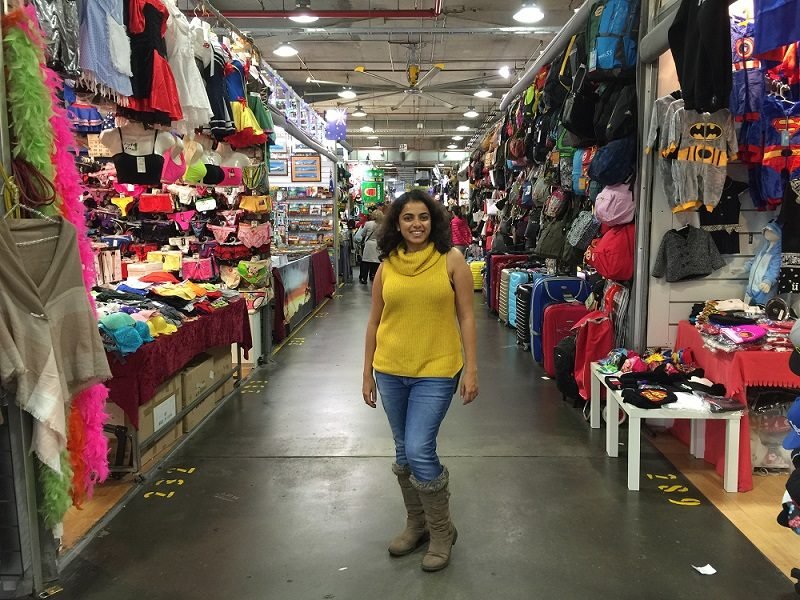
Key Features and Attractions:
- Varied Merchandise: Paddy’s Market features an extensive array of goods, including fresh produce, clothing, accessories, electronics, homewares, and souvenirs. The market is well-known for its bargain prices and diverse selection.
- Fresh Produce: The market is renowned for its fresh fruits and vegetables. Vendors offer seasonal produce, local and exotic fruits, and vegetables at competitive prices.
- Clothing and Accessories: Shop for a wide range of fashion items, from casual and formal attire to accessories like bags, shoes, and jewellery. Many stalls offer trendy and affordable clothing options.
- Souvenirs and Gifts: Discover a variety of souvenirs and gifts, including Australian-themed items, crafts, and unique memorabilia. It’s an excellent place to pick up gifts and souvenirs from your visit to Sydney.
- Food and Snacks: Enjoy a selection of food stalls offering snacks, street food, and beverages. The market has options for quick bites and refreshments while you shop.
Tips for Shopping at Paddy’s Market:
- Getting There:
- Public Transport: Paddy’s Market is easily accessible by public transport. Take a train to Central Station or a bus to the nearby stops, and it’s a short walk to the market.
- Parking: There is limited parking available in the area. To avoid the hassle of parking, it is recommended that you use public transport or rideshare services.
- Shopping Tips:
- Bargaining: While many prices are fixed, some vendors may be open to negotiation, especially for bulk purchases or high-value items. Don’t hesitate to ask for a better price.
- Cash and Cards: Most vendors accept cash and cards, but it’s a good idea to carry some cash for smaller transactions and make things easier.
- Best Times to Visit:
- Weekdays vs. Weekends: The market is busiest on weekends, particularly Saturday mornings. For a less crowded experience, visit on a weekday or later in the afternoon on weekends.
- Market Hours: Paddy’s Market is typically open from Wednesday to Sunday. Check the current opening hours before visiting to ensure you plan your trip accordingly.
- What to Look For:
- Fresh Produce: Explore the fruit and vegetable stalls for fresh and seasonal produce. It’s an ideal spot to stock up on groceries or try something new.
- Unique Items: Look for unique and locally-made items, crafts, and souvenirs that reflect Australian culture and Sydney’s vibrant atmosphere.
- Food and Refreshments:
- Snacks and Drinks: Visit the food stalls, which offer a range of snacks and drinks. It’s a great way to take a break and sample local flavours.
- Seating: There are limited seating areas, so if you grab a quick bite, be prepared to eat standing or while walking.
- Environmental Considerations:
- Reusable Bags: Bring your reusable shopping bags to reduce plastic waste. Many vendors provide bags, but it’s eco-friendly to use your own.
- Waste Disposal: Please dispose of trash properly and use recycling bins where available to keep the market clean and enjoyable for everyone.
Queen Victoria Building (QVB)
- Time Required: 1-2 hours
- How to Get There: Walk from Town Hall Station.
- Ticket Information: Free entry; pay for shopping and dining.
The Queen Victoria Building (QVB) is a historic and iconic shopping destination in the heart of Sydney’s Central Business District. Opened in 1898, the building is renowned for its stunning architecture, elegant interiors, and a diverse range of high-end and boutique retail stores. The QVB combines historic charm with modern luxury, offering a unique shopping experience in a beautifully restored landmark.
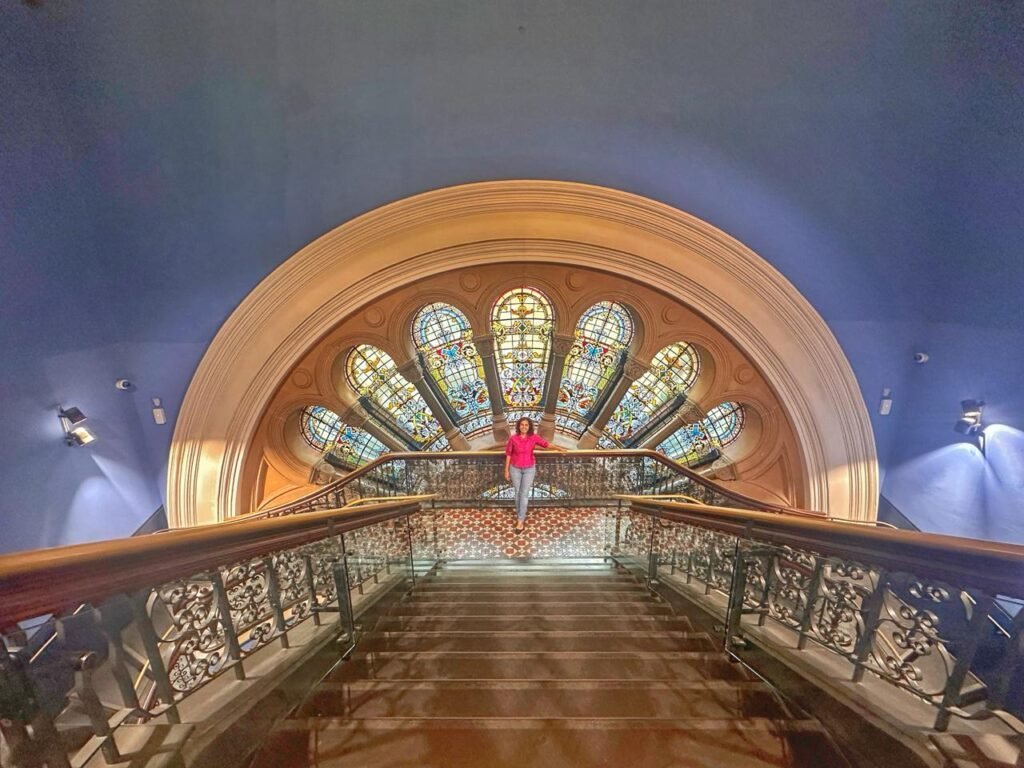
Key Features and Attractions:
- Architectural Beauty: The QVB is celebrated for its Romanesque Revival architecture, featuring intricate stained glass windows, ornate ironwork, and a grand central dome. The building’s design reflects the luxury and elegance of its late 19th-century origins.
- Retail Variety: The QVB houses a wide array of high-end boutiques, luxury brands, and specialty stores. The building caters to various shopping preferences, from designer fashion and fine jewellery to homewares and gourmet food.
- Dining Options: The QVB offers various dining options, including cafes, restaurants, and gourmet food outlets. Enjoy a meal or a coffee break while taking in the building’s stunning surroundings.
- Historical Significance: The building’s rich history is evident throughout its design and features. Guided tours and historical displays provide insights into the QVB’s past and its role in Sydney’s development.
- Events and Exhibitions: The QVB often hosts events, exhibitions, and seasonal activities. Check the schedule for special events and cultural programs that might coincide with your visit.
Tips for Shopping at the Queen Victoria Building:
- Getting There:
- Public Transport: The QVB is centrally located and easily accessible by public transport. Take a train to Town Hall Station, which is directly connected to the building via underground walkways. Several bus routes also stop nearby.
- Parking: Limited parking is available in the vicinity, including at the QVB’s parking facility. Consider using public transport or a rideshare service to avoid parking difficulties.
- Shopping Experience:
- Luxury Brands: Explore QVB’s luxury brands and high-end boutique selection. Popular stores include Chanel, Gucci, Louis Vuitton, and Australian designer labels.
- Specialty Stores: Visit specialty stores for unique items, such as bespoke jewellery, fine wines, and artisanal products.
- Dining and Refreshments:
- Cafes and Restaurants: Take a break at QVB’s cafes or restaurants. Options range from casual coffee spots to more formal dining establishments, offering a variety of cuisines.
- Gourmet Food: The building also offers gourmet food outlets to purchase local and international products.
- Exploring the Architecture:
- Interior Highlights: Take time to admire the building’s architectural details, including the grand staircase, stained glass windows, and intricate ironwork.
- Central Dome: Visit the central dome area to experience its majestic design and take in the panoramic views of the surrounding retail spaces.
- Events and Activities:
- Check Schedules: Before your visit, look up event schedules and exhibition information to see if there are any special activities or exhibitions during your stay.
- Historical Tours: Consider joining a guided tour to learn more about the QVB’s history and architectural significance.
- Shopping Tips:
- Sales and Promotions: Look for sales and special promotions. Many stores offer seasonal discounts and exclusive deals.
- Gift Shopping: The QVB is a great place for gift shopping, with a range of unique and luxury items perfect for special occasions.
- Comfort and Accessibility:
- Facilities: The QVB provides restrooms, baby change facilities, and accessible services. Information desks are available for assistance and inquiries.
- Dress Comfortably: Wear comfortable shoes for walking and exploring the extensive shopping areas and historical features of the building.
Bondi Beach Market
- Time Required: 1-2 hours
- How to Get There: Take a bus or train to Bondi Junction, then take a short ride to Bondi Beach.
- Ticket Information: Free entry; pay for purchases.
Bondi Beach Market is a popular and vibrant open-air market held every Sunday in Bondi Beach Public School grounds. The market showcases various stalls offering handmade crafts, vintage clothing, jewellery, artworks, gourmet foods, and fresh produce. It is a lively destination for locals and tourists, providing a unique shopping experience in one of Sydney’s most iconic locations.

Key Features and Attractions:
- Unique Handcrafted Goods: The market is known for its handmade items, including jewellery, accessories, homewares, and artisanal crafts. Local artists and designers often create these unique pieces, offering you one-of-a-kind treasures.
- Vintage and Fashion Finds: Bondi Beach Market is a hotspot for vintage clothing and contemporary fashion. Shoppers can find everything from retro garments to cutting-edge designs by emerging local designers.
- Gourmet Foods and Fresh Produce: The market features stalls selling gourmet foods, baked goods, and fresh produce. You can sample homemade treats, pick up organic vegetables, and enjoy delicious snacks from food vendors.
- Art and Music: The market often hosts live music and art displays, creating a lively and creative atmosphere. Local musicians and artists showcase their talents, adding to the market’s vibrant ambience.
- Community Vibe: Bondi Beach Market has a strong community feel, with a friendly and relaxed environment. It’s a place where locals and visitors mingle, shop, and enjoy the beachside setting.
Tips for Visiting Bondi Beach Market:
- Getting There:
- Public Transport: Bondi Beach is easily accessible by public transport. Take a train to Bondi Junction and then a bus to Bondi Beach. Several bus routes serve the area.
- Parking: Paid parking is available near Bondi Beach but can be limited, especially on weekends. Consider using public transport to avoid parking difficulties.
- Best Times to Visit:
- Early Arrival: Arrive early in the morning to avoid the crowds and have the first pick of the market’s offerings. Early morning is also a great time to park if you’re driving.
- All Day Fun: The market is open from 10 AM to 4 PM, giving you plenty of time to explore the stalls and enjoy the surroundings.
- What to Bring:
- Reusable Bags: Carry your purchases in reusable shopping bags. This is an eco-friendly choice, and many vendors appreciate it.
- Cash and Cards: While many vendors accept card payments, bringing some cash is also a good idea. Some stalls might be cash-only, and both options ensure a smooth shopping experience.
- Shopping Tips:
- Explore Thoroughly: Take your time to explore all the stalls. The market offers a wide range of items; if you look carefully, you might find hidden gems.
- Talk to the Vendors: Engage with the stallholders. They often create the items they sell and can provide interesting stories and information about their products.
- Food and Refreshments:
- Enjoy the Local Flavours: Don’t miss the opportunity to try gourmet foods and snacks from the market’s food stalls. From freshly baked pastries to organic produce, there’s something for everyone.
- Stay Hydrated: Bring a water bottle and stay hydrated, especially on hot days. Many vendors also sell fresh juices and other beverages.
- Family-Friendly Activities:
- Bring the Kids: The market is family-friendly, with activities and items that appeal to children. It’s a great place for a family outing.
- Pet-Friendly: The market is also pet-friendly, so feel free to bring your furry friends along for the experience.
- Special Events:
- Seasonal Markets: Check the market’s schedule for special events and seasonal markets, often featuring themed stalls and additional entertainment.
Closing Notes
Exploring Sydney over seven days provides a fantastic glimpse into its rich culture, stunning landscapes, and vibrant city life. From iconic landmarks to hidden treasures, this itinerary offers a comprehensive experience that captures the essence of Sydney. As someone who has called this city home for a decade, I hope my insights and tips enhance your visit. If you enjoyed this guide or found it helpful, please share your thoughts in the comments below. For more travel tips and itineraries, subscribe to my blog. Happy travels, and enjoy your adventure in Sydney!
How Can You Support Me?
You know I love coffee, so you can buy me a coffee – Buy Me Coffee!
If you enjoyed reading this article, please comment, share, and tweet so others can enjoy it.
Do you have any questions or suggestions? Or do you want to chat? You can write to me at LetsTravelSydney@gmail.com.
PIN for later reference – Sydney 7 Day Itinerary
